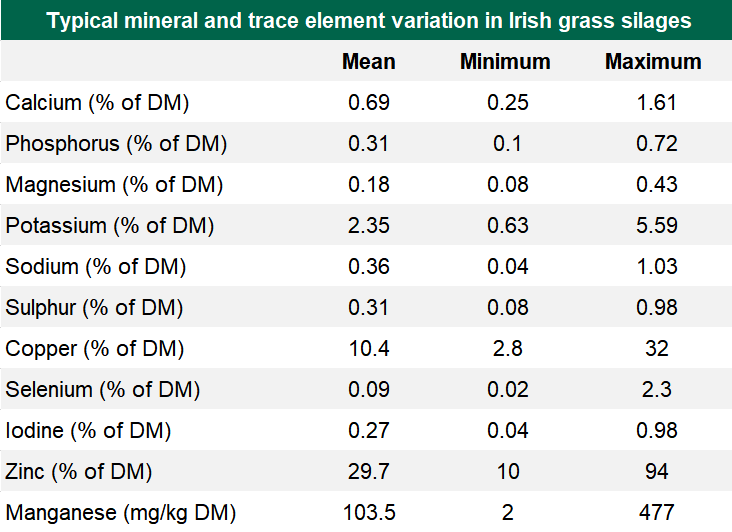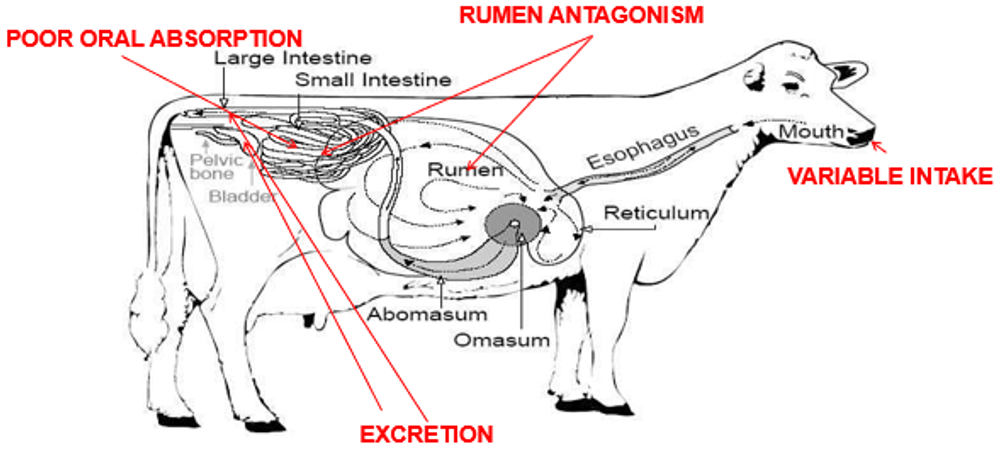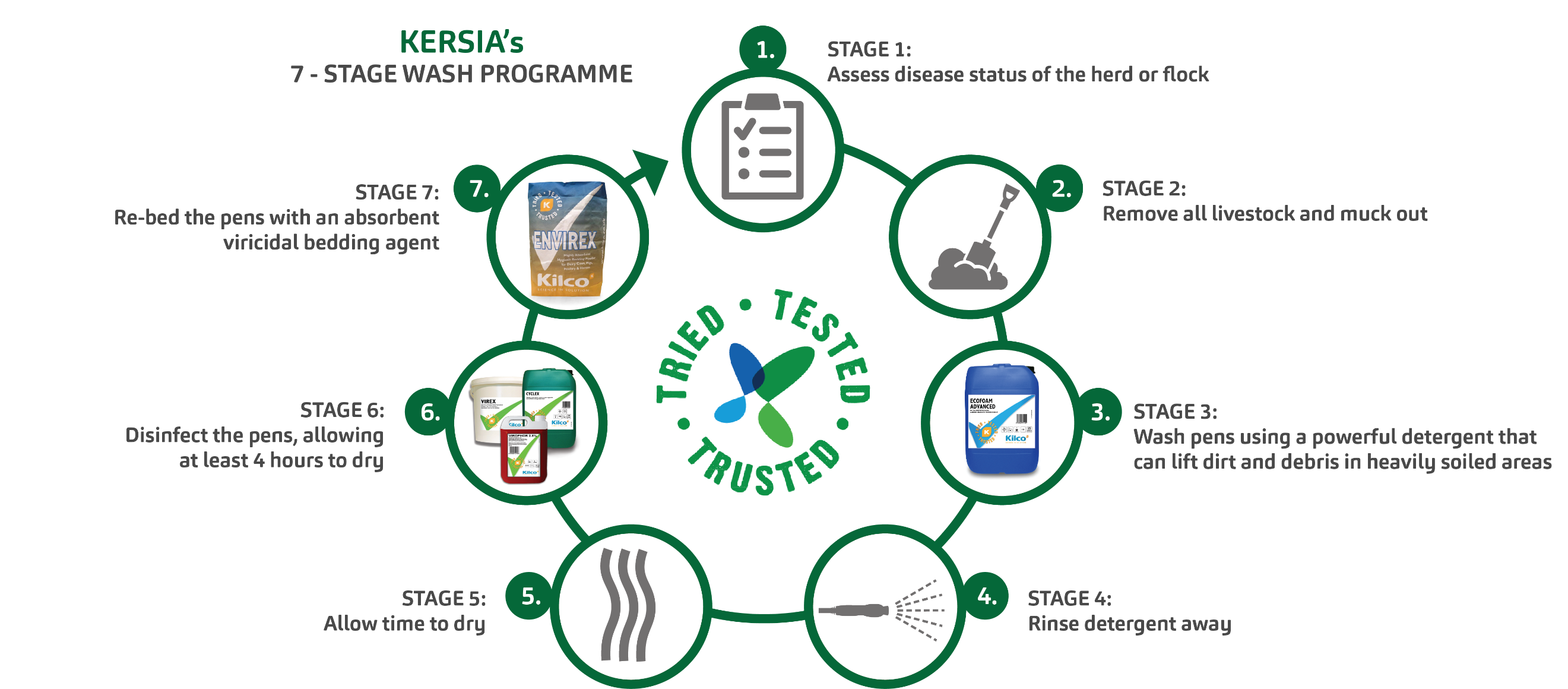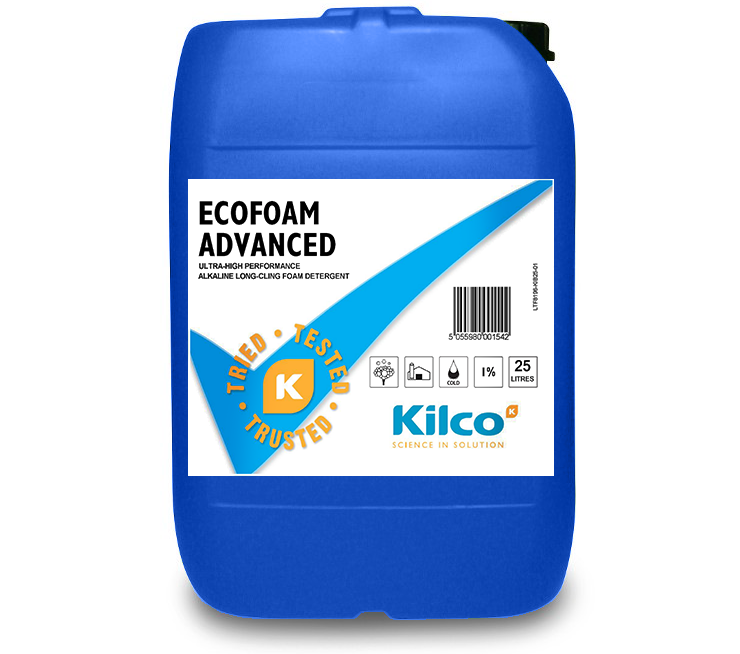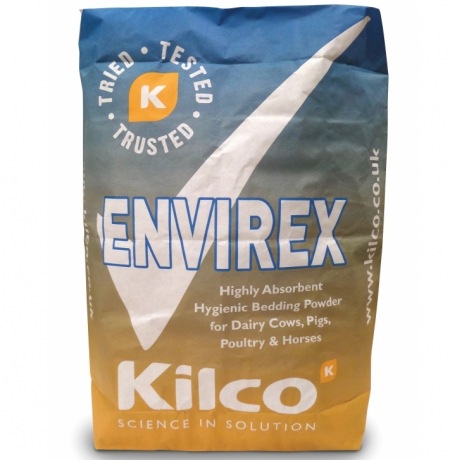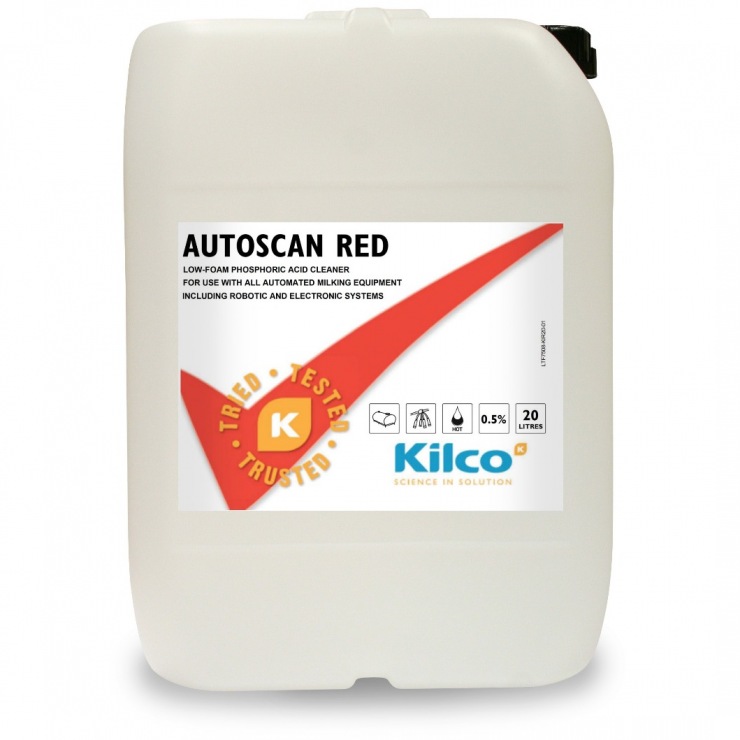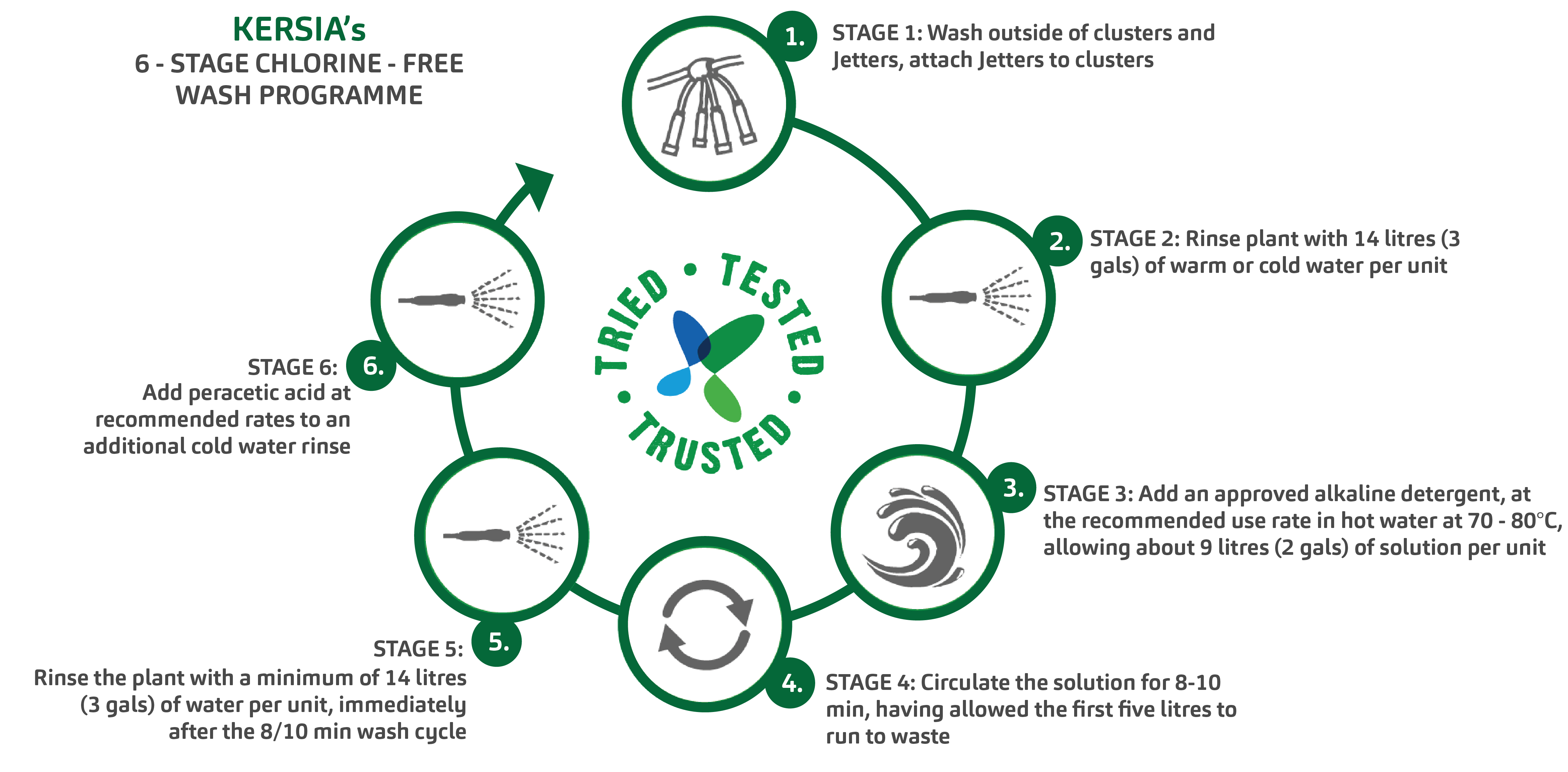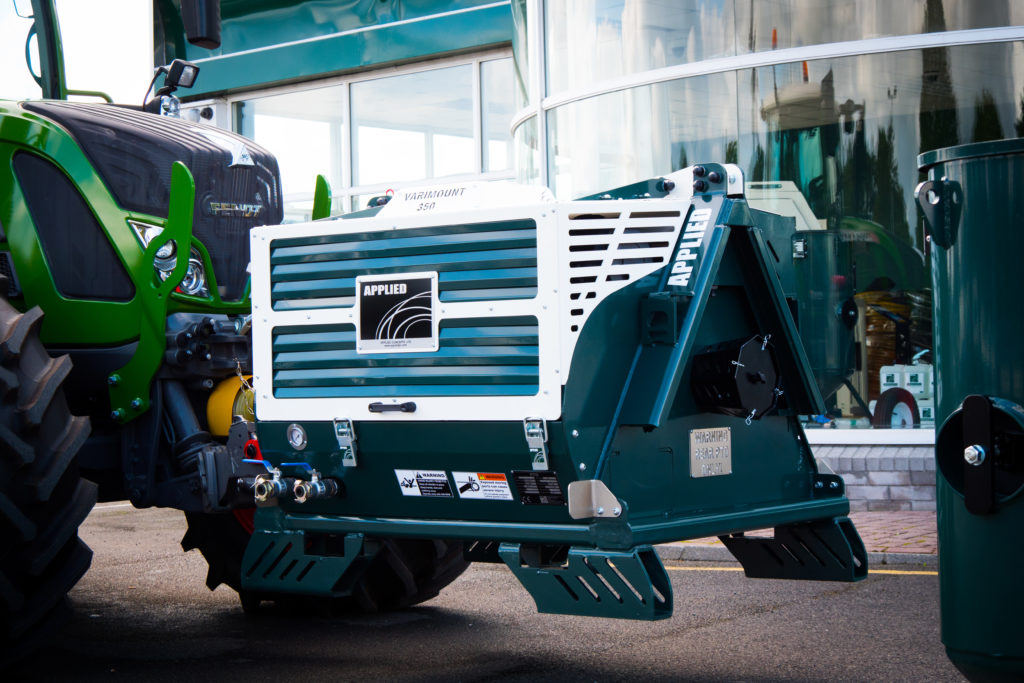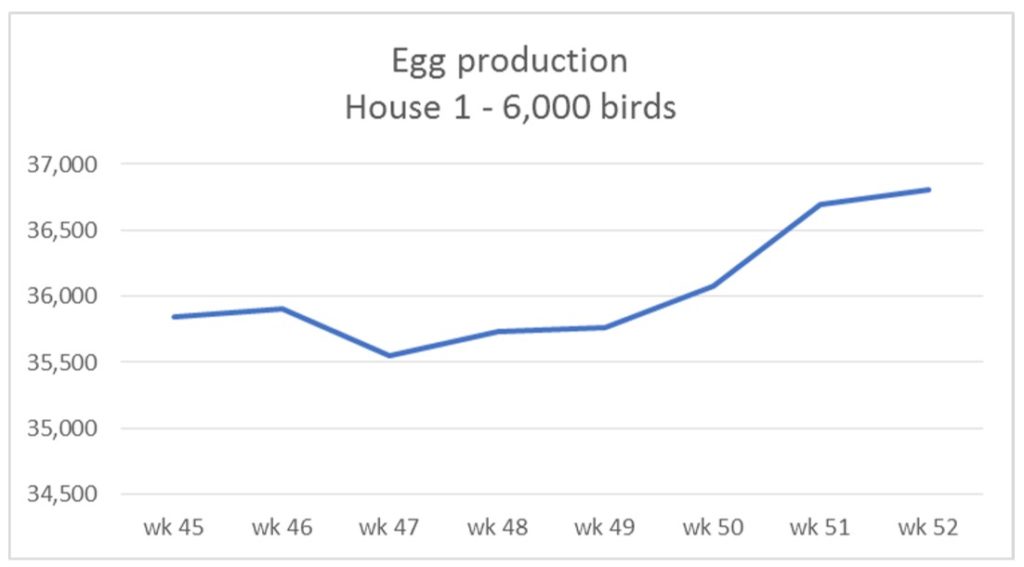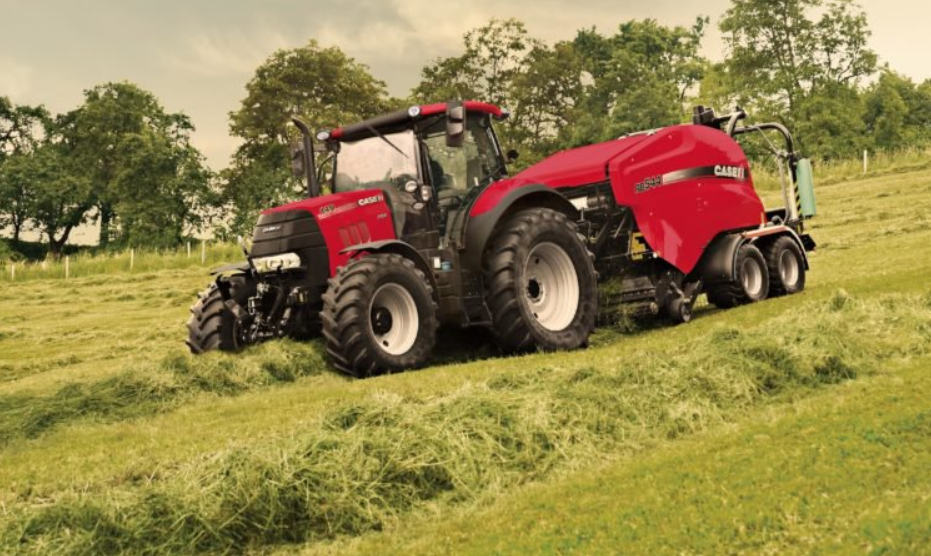The post Dairy farmers enjoy a family Christmas appeared first on Agriland.co.uk.
]]>Family time
His daughter Aisling is also delighted with the difference the robots have made. “This year on Christmas Day we’ll get to spend a lot more time together as a family, and we’ll be able to rely on the robots to keep the cows going during the day,” she said. Prior to installing the robots the family visited other Lely farms. “Anybody that had them had nothing bad to say about them,” said Bernard.And sure, I can see it now. They’re in there 12 months now and they’re really flying and the cows are really used to them.”Of course every day is now easier for the Heaveys, not just over Christmas. “Before we got the robots I would have associated the farm with stress and a lot of work. I was overwhelmed by it all. Then I saw the idea of robots and the lifestyle. It’s changed completely,” said Aisling.
It’s all your own. You do it as you want to do it. It’s such a big help and there’s not as much stress at all.”Bernard said that encouraging the next generation was part of his decision to invest in automation. “I didn’t want them getting the hardship I was getting,” he said. “I didn’t want them to be stuck in a milking parlour.” He also believes that the robots will mean that he won’t have to retire as soon, and that if he ever got ill, Aisling could run the farm in his absence.
Benefits of automation
Dairy farmers across Ireland are realising the benefits of automation on their farm, not just for improving their work/life balance and having more time with their families and friends, but also from a performance point of view. Freeing up labour means that more time can be spent on managing the herd, spotting and acting on any potential problems. Lely farmers often comment that they can manage their herd more proactively since automating the time-consuming task of milking.Adding a Discovery manure scraping or collecting robot can free up even more time as it works autonomously to keep the barn clean. Lely also offers feeding solutions with the Vector which can mix, deliver and push rations autonomously while the Juno can ensure feed is kept pushed up to the feed face.
The Lely Astronaut generates a wealth of data at individual cow level and the Horizon app can unlock further productivity gains, boosting the health and welfare of the herd as well as the farm business’s bottom line.

The post Dairy farmers enjoy a family Christmas appeared first on Agriland.co.uk.
]]>The post How can subclinical mineral deficiency occur post-calving? appeared first on Agriland.co.uk.
]]>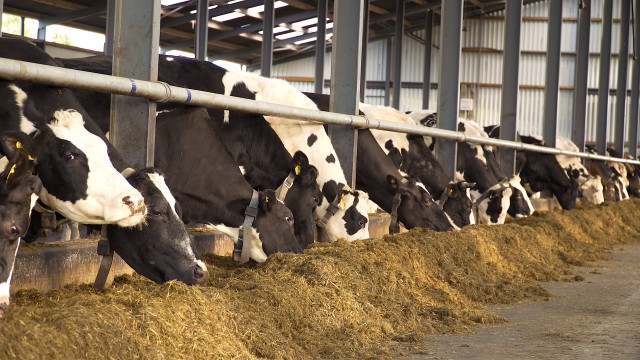 The weeks of spring are a critical period for farms in Ireland aiming to get cows back in calf quickly to ensure a compact-calving interval.
The weeks of spring are a critical period for farms in Ireland aiming to get cows back in calf quickly to ensure a compact-calving interval.
Teagasc research shows nationally only 58% of the dairy herd calves in the first six weeks of the calving season and a calving interval of 394 days.
The Teagasc targets are 80% calved in the first six weeks and a calving interval of 365 days. Subclinical mineral deficiency may be adversely affecting reproductive performance in Irish herds and addressing this issue could improve reproductive performance nationally.
Years of research has documented how trace mineral nutrition is vital for reproductive performance in cattle and cattle that are in poor mineral status may have poorer fertility.
Zinc-deficient cows appear to display abnormal oestrus as well as experience a decrease in fertility (Underwood, 1981).
A deficiency in copper (Cu) can lead to decreased conception rates, infertility, silent heats and foetal resorption (Hostetler et al., 2003).
A deficiency in selenium (Se) can lead to cystic ovaries and erratic, weak, or silent heat periods (Hostetler et al., 2003).
Manganese (Mn) deficiency will result in impaired ovulation (Wilson, 1952). While clinical deficiency in cattle will display the tell-tale clinical signs of deficiency, like the brittle coat of a copper (Cu) deficient animal, the key is the unseen issue of subclinical deficiency.
Click here, complete form and get a free consultation from Virbac on the benefits of injectable trace mineral top up.
Understanding subclinical disease
Subclinical disease is defined as an illness that is staying below the surface of clinical detection, meaning there are no recognisable signs, but the disease can still be adversely affecting the animal.
Marginal or subclinical mineral deficiency in cattle will not show clinical signs that will help with diagnosis, but the effects of subclinical deficiency may still adversely affect herds’ reproductive and disease status, so cows may appear healthy but they may not be achieving or maintaining pregnancy.
How can subclinical mineral deficiency occur?
In Ireland, herd cases of trace mineral deficiency arise frequently but are often not reported. It was reported by Rogers and Murphy (2000), that within Irish grass silages, 63% are low in copper (Cu), 69% are very low in selenium (Se) and 29% are low in zinc (Zn) – (see table below).
This means a lot of cattle are on the threshold of subclinical deficiency as they are not offered silage with adequate minerals.
Furthermore, even cattle fed on grass silage or forages that are meeting mineral requirements simply may not eat an adequate level of forage to maintain mineral levels.
In the pre-calving period, dry matter intake (DMI) falls by 30-35%, meaning cows may need to use their mineral stores like (e.g. in the liver) pre and post-calving for maintenance.
Unfortunately, during this period there can be increase an excretion of minerals which can be made worse by stress, but there is also a massive increase in demand for minerals.
In the weeks coming up to calving, the unborn calf will be growing rapidly and its only supply of minerals will be across the placenta from the dam.
After calving, the cow will be lactating, recovering from calving and trying to get back in calf. All these processes mean there is a huge spike in mineral demand, while intake is reduced, meaning mineral stores of cows can become depleted.
This is how even seemingly well-fed cows and herds can fall into subclinical mineral deficiency and fail to achieve or maintain pregnancy.
Other issues complicate the situation further at this time. Oral minerals, depending on their form, are relatively poorly absorbed by cattle.
Only 1-5% of oral copper is absorbed by adult cattle, for zinc (Zn) 10-20% and manganese (Mn) is only absorbed about 1%. Thus, even using silage that has adequate minerals, oral trace mineral supplementation can take weeks-to-months to build back up the mineral store in cattle.
Rumen antagonism further hampers the poor oral mineral absorption. Antagonists are minerals like sulphur (S), calcium (Ca), iron (Fe) and molybdenum (Mo), that despite being essential parts of the bovine diet, when supplied above certain levels, they adversely affect the absorption of other minerals like copper (Cu), zinc (Zn) or selenium (Se).
This means that even though diets appear to have adequate levels of trace minerals, may not be effective in maintaining cows’ mineral levels, as the antagonists are blocking the minerals being absorbed.
Click here, complete form and get a free consultation from Virbac on the benefits of injectable trace mineral top up.
How to prevent subclinical deficiency at pre-breeding?
Strategic Trace Mineral Injections are a fast and effective way for farmers to enhance their cows mineral status in the pre-breeding window.
Strategic Trace Mineral Injections are a popular way to improved herd performance in the US, Australia, South Africa and New Zealand.
Strategic Trace Mineral Injection could help to improve the overall pregnancy rate and calving distribution.
Years of research from leading animal health and veterinary universities from around the world have demonstrated the potential benefits of this strategic mineral injections.
Strategic Trace Mineral Injections bypass the harsh rumen environment and antagonists, rapidly raise circulating mineral levels in cows within 8-to-10 hours, and after 24 hours, the key minerals are at raised concentrations in the vital storage organs like the liver (Pogge et al., 2012).
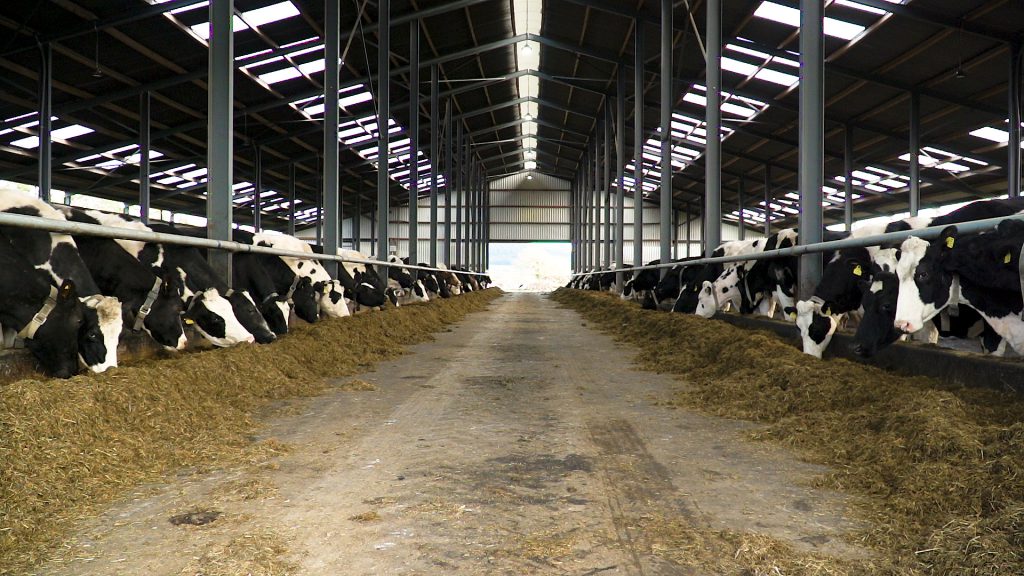
From here the minerals can be incorporated into the different body systems to help maintain immunity, fertility and performance.
Teagasc estimate that a cow calving in May will generate €400 less profit than a cow calving in February, due to higher feed costs and reduced yield and, for every 100 cows, compact calving is worth – on average – €10,000-12,000 (€100-120/cow/year).
Pre-breeding supplementation helps to raise not only the trace minerals, but also the essential enzyme levels in cows rapidly and effectively, which could drastically assist farmers to get cows and heifers back in calf in a tighter-calving pattern.
Several studies from leading US universities have researched the potential benefits of injectable trace mineral supplementation in cows in the pre-breeding period, with improvements in overall pregnancy and improved calving distribution (Mundell et al, 2012).
Ask your vet how an injectable trace mineral supplement could help get your cows back in calf.
More information
Click here, complete form and get a free consultation from Virbac on the benefits of injectable trace mineral top up.
References:
- Teagasc Breeding Management https://www.teagasc.ie/animals/dairy/breeding–genetics/breeding-management/
- Underwood, E.J. (1981) The Mineral Nutrition of Livestock. 2nd Edition, Commonwealth Agricultural Bureaux, Slough.
- Wilson, J. G. 1952. Herd functional infertility, with reference to nutrition and mineral intake. Vet. Rec. 64:621–623.
- Hostetler CE, Kincaid RL, Mirando MA., Vet J. 2003 Sep;166(2):125-39. The role of essential trace elements in embryonic and fetal development in livestock.
- Rogers, P.A.M. and Murphy, R. (2000) Levels of Dry Matter, Major Elements (calcium, magnesium, nitrogen, phosphorus, potassium, sodium and sulphur) and Trace Elements (cobalt, copper, iodine, manganese, molybdenum, selenium and zinc) in Irish Grass, Silage and Hay http://homepage.eircom.net/~progers/0forage.htm
- Dry and transition cow nutrition for the grazing Irish dairy herd, Dr Finbar Mulligan and Catherine Carty MVB https://ihfa.ie/wp-content/uploads/2016/04/Grassland-Association-paper-Jan-2016-Finbar-Mulligan.pdf
- Pogge, D. & Richter, E. Mineral concentrations of plasma and liver following injection with a trace mineral complex differ among Angus and Simmental cattle. J. Anim. Sci. 90, 2692–2698 (2012).
- Effects of prepartum and postpartum bolus injections of trace minerals on performance of beef cows and calves grazing native range 2012 L. R. Mundell, J. R. Jaeger, J. W. Waggoner, J. S. Stevenson, D. M. Grieger, L. A. Pacheco, J. W. Bolte, N. A. Aubel, G. J. Eckerle, M. J. Macek, S. M. Ensley, L. J. Havenga, and K. C. Olson
The post How can subclinical mineral deficiency occur post-calving? appeared first on Agriland.co.uk.
]]>The post Helping break the cycle of disease at calving with effective biosecurity appeared first on Agriland.co.uk.
]]>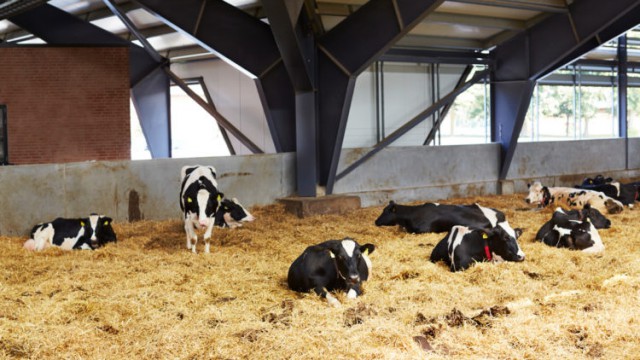 Calving for any dairy farmer means late nights, early mornings and lots of hard work. So, it is vital that after all the hard work, farmers have the right conditions ready for the arrival of new calves. Effective and easy to follow biosecurity ensures optimum health and the very best start for every new-born calf.
Calving for any dairy farmer means late nights, early mornings and lots of hard work. So, it is vital that after all the hard work, farmers have the right conditions ready for the arrival of new calves. Effective and easy to follow biosecurity ensures optimum health and the very best start for every new-born calf.
It is well documented that coccidiosis and cryptosporidiosis, caused by oocysts, can thrive in a livestock environment, exponentially if it is a dirty one. Both micro-organisms cause illness in cattle and youngstock who are particularly vulnerable to infection due to little or no immune system after birth.
In many cases, animals will show few external symptoms but will simply fail to thrive. This means increased mortality rates. As a result, profit margins will be squeezed placing financial pressure on the farm.
It is possible to use medication to shorten the length of any illness and reduce the chance of secondary infection. Whilst this is effective, it is of course expensive. It is far more cost effective to reduce infection rates in the first place by preventing the intake of oocysts in young animals.
As the saying goes “prevention is better than cure”.
How?
The implementation of a robust and effective biosecurity programme cannot be overstated. It is crucial to help reduce and prevent the rate of infection and the spread of disease, particularly in youngstock.
In short if a biosecurity programme is adhered too, the profitability of each animal will increase. This results in stability further down the line as the calves begin to grow.
Implement a cleaning and disinfection programme now
Implementing a cleaning and disinfection programme can seem like a daunting process. However, the steps are relatively simple and the sooner the better.
Firstly it is important to accurately assess the current situation including the disease status of the herd and any hygiene procedures already in use.
The first stage should be to remove livestock from the housing area and then remove any residual bedding before starting cleaning. Using a foaming detergent designed to remove soiling and grease greatly helps. This should be thoroughly rinsed and allowed to dry.
The next and most important stage is to then apply a target disinfectant that is effective against the oocysts responsible for coccidiosis and cryptosporidiosis.
Apply the disinfectant following the usage instructions and then the pens can be re-bedded in preparation for the animals to return. It may also be useful to introduce a hygienic bedding powder to enhance the sanitation in the area before the animals return.
KERSIA seven-stage biosecurity cleaning regime:
The detergent
ECOFOAM Advanced
Using a quality detergent to remove all organic matter prior to disinfection is paramount to the overall effectiveness of a robust biosecurity programme. ECOFOAM Advanced has been developed specifically for this purpose.
It is an ultra-high performance, alkaline, long-cling foam cleaner which is designed to clean heavily soiled areas.
The benefits of ECOFOAM Advanced include:
- Advanced “wet film foam” technology which gives enhanced cling to all surfaces (including porous) ones;
- Excellent removal of carbohydrate, starch, fat and protein deposits;
- Fully effective regardless of water hardness;
- Proven to significantly reduce time and the workload required during wash down.
The disinfectant
Cyclex
Cyclex is approved by the Department for Environment, Food and Rural Affairs (DEFRA) and the Department of Agriculture, Food, and the Marine (DAFM) in Northern Ireland.
It is a clinically proven disinfectant. It is effective in the defence against oocysts responsible for coccidiosis and cryptosporidiosis.
The benefits of Cyclex:
- It is easy to mix and apply;
- Specially formulated, chlorocresol-based disinfectant with strong microbiocidal properties (passed EN1656, EN1657, EN14349);
- Passed the rigorous testing requirements recommended by the German Veterinary Association (DVG) against spore-forming oocysts;
- Can be used in cattle, young stock, poultry, pig, sheep and goat housing;
- Eliminates risk of residues (cyuranic-acid free);
- Contains no chemicals of industry concern (QUAT- free).
Bovine TB protection with Virophor 2.8%
Bovine TB can destroy livestock, livelihoods and annual testing on farm is expensive and time consuming. A positive result will undoubtedly adversely affect your net milk yield output in the short and long term.
Virophor 2.8% is a DEFRA/DAFM approved surface disinfectant and is a potent weapon in the fight against bovine TB. It is an essential tool in the fight to help control disease as part of an effective biosecurity programme all year round.
The benefits of Virophor 2.8%:
- A clinically proven surface disinfectant, which is DEFRA/DAFM approved;
- Contains Iodophor;
- Effective against foot-and-mouth disease;
- Can be sprayed or foamed;
- Suitable for use on surfaces, equipment and foot dips.
The bedding conditioner
Envirex
Envirex bedding conditioner contains a unique combination of 2% w/w (weight per weight) of the proven biocidal product VIREX. It is found in a base-powder formulation, comprising mineral desiccants and essential oils.
Envirex has been specifically designed to maintain a dry, healthy environment for all types of livestock animals.
The formulation is comprised of ingredients which:
- Ensure longevity of the product, even under high-humidity conditions;
- Does not paste up to form clumps after drying;
- Reduces greasiness in animal accommodation and provides a non-slip environment;
- Has a greater absorptive capacity than that of any other clay;
- Helps prevent the animal’s skin from drying, thus keeping it supple and less likely to suffer from lacerations.
The vital important of animal nutrition
It is also very important to consider the nutrition and the management routine of young calves, in order to give them the best possible start in life once born.
For example: Ensuring a new-born calf receives adequate colostrum after birth, results in the right number of essential antibodies are provided, in order to boost the immune system and help fight disease.
A calf will only start to produce its own antibodies over the first three-to-four weeks from birth and it may be necessary to supplement the dam’s colostrum to ensure the calf gets the maximum protection.
Reviewing your protocols for the handling and housing of your calves can also help reduce the spread of disease within a herd.
Where possible rear in batches to avoid younger calves mixing with or being accommodated in areas used by older calves, to help prevent cross contamination.
All livestock handlers or visitors to the farm, must also follow appropriate biosecurity measures, including foot dips and regular hand washing to help prevent disease being transferred between areas.
Find out more
To find out more on to how to implement an effective biosecurity programme during spring calving, as well as how to protect your herd against the ever present threat of bovine TB for year round protection, please contact your local KERSIA representatives:
- Jeremy Kivell on: 07815 109223; or email: [email protected];
- David John on: 07584 685858; or email: [email protected];
- Martin Ashley on: 07827 772202; or email: [email protected];
- Sean O’Toole on: 07814 884962; or email: [email protected].
The post Helping break the cycle of disease at calving with effective biosecurity appeared first on Agriland.co.uk.
]]>The post A chlorine-free wash programme for robots, milking equipment and bulk milk tanks appeared first on Agriland.co.uk.
]]> UK dairy farmers are beginning to recognise the benefits of using a chlorine-free wash programme as part of their daily cleaning routines, in order to disinfect and clean their milking machine and bulk tanks as part of a robust and effective parlour hygiene routine.
UK dairy farmers are beginning to recognise the benefits of using a chlorine-free wash programme as part of their daily cleaning routines, in order to disinfect and clean their milking machine and bulk tanks as part of a robust and effective parlour hygiene routine.
Why? Well switching to a chlorine-free cleaning routine helps to greatly reduce the levels of trichloromethane (TCM) and chlorite residues in milk.
This process is now commonplace in Ireland in line with milk processors’ requests. Irish dairy farmers have to ensure that their milk levels contain ultra-low levels of chlorine in order to obtain the best price is paid for each litre of milk they produce.
Whilst this is not a requirement in the UK, the products which we use, are extremely effective in their ability to clean milking parlours and bulk milk tanks. After all a clean and hygienic dairy plant is beneficial for the final milk yield quality.
The KERSIA chlorine-free wash programme
KERSIA takes great pride in its range of chlorine-free chemical products, which are proven to help clean and disinfect all parts of a milking machines, equipment and bulk milk tanks. Its chlorine-free cleaning regime is simple to follow to help reduce TCM levels to ultra-low in milk.
To achieve this, KERSIA has developed a five and six stage cleaning programme which are both simple yet effective. The five stage programme incorporates AUTOSAN Blue and HYPRACID ONE. The six stage uses a peracetic acid rinse combined with our traditional products all of which are chlorine free.
KERSIA’s five-stage, chlorine-free cleaning programme, using AUTOSAN Blue and HYPRACID ONE.
KERSIA’S chlorine-free detergent and disinfectant product solutions
KERSIA recommends the following chlorine-free cleaning products for milking parlours daily and weekly wash programmes.
Bulk milk tank and milking machine cleaning
HYPRACID ONE
HYPRACID ONE is a unique three-in-one chlorine-free detergent, descaler and steriliser. It is phosphoric acid free helping to eliminate TCM and chlorate residues in bulk milk tanks.
HYPRACID ONE is also kind to milking rubber-ware, nitric acid free and is also an environmentally friendly disinfectant. It is available in 20kg, 60kg or 220kg drums.
For best results, we recommend that HYPRACID ONE is used only with hot water.
The detergents
AUTOSAN Blue
AUTOSAN Blue is our proven low foaming, alkaline, chlorine-free detergent. It provides a high-performance caustic alkaline solution that can be used in both hot and cold water.
AUTOSAN Blue is suitable for use in all milking parlours, bulk milk-tanks and robotic/electronic cleaning systems. It is available in 20L, 200L and 1,000L IBC containers. It has been sold for many years to dairy farmers as an effective chlorine free detergent.
Clearway Plus
Clearway Plus is a chlorine-free circulation powder. Specially formulated for use in hard water areas, for cold wash cleaning. However, it can be used hot or cold at a usage rate of 226g/45L of water.
Clearway Plus has been used extensively for many years to deliver effective results, as it removes surface dirt from clusters and Jetters. It is specifically formulated to help reduce TCM and chlorate levels in milk yields. It is available in a 20kg bucket.
Milking parlour and robotic disinfectants
HYSPRAY PA5
HYSPRAY PA 5 is a chlorine-free peracetic acid, hydrogen peroxide surface disinfectant sanitiser. It can be used in the final rinse post milking on regular milking parlours, in cluster dipping and spraying and on automatic cluster flush systems. It is available in 24kg and 210 drums
AUTOSCAN RED
AUTOSCAN RED is an extra-strength, low foaming phosphoric acid cleaner. It is suitable for use with all automated milking equipment, including robots. It is available in 20L and 200L drums.
KERSIA’S six-stage, chlorine-free cleaning programme, incorporating AUTOSAN Blue, AUTOSCAN Red and a PERACETIC ACID FLUSH.
Repeat the above cleaning routine after PM milking, using cold water (cold wash) in the main wash cycle.
KERSIA’s range of chlorine-free cleaning solutions are suitable for all types of milking parlours and bulk milk tanks. Its range of specially developed products can help to greatly reduce chlorate and TCM levels in milk.
However, the products described are extremely effective to maintain a clean and hygienic milk parlour including bulk milk tanks, to ensure that the milk produced is of the highest quality.
Teagasc tested
Both KERSIA’s five stage and six stage chlorine-free cleaning programmes have been tested under Teagasc’s controlled testing protocols in Ireland, using AUTOSAN Blue and AUTOSCAN Red and AUTOSAN Blue and HYPRACID One.
In 2018, a study undertaken by Teagasc Moorepark at Kilworth research farm, found that a chlorine-free routine was as effective as standard cleaning protocols already in place and at a comparable daily cost.
Find out more
To find out more on how to implement our effective chlorine-free cleaning programme, please contact your local KERSIA representatives:
- Jeremy Kivell on: +44 7815 109223; or email: [email protected];
- David John on: +44 7584 685858; or email: [email protected];
- Martin Ashley on: +44 7827 772202; or email: [email protected];
- Sean O’Toole on: 00 44 7814884962; or email at: [email protected].
The post A chlorine-free wash programme for robots, milking equipment and bulk milk tanks appeared first on Agriland.co.uk.
]]>The post Can you afford to leave 5p/L behind you? appeared first on Agriland.co.uk.
]]>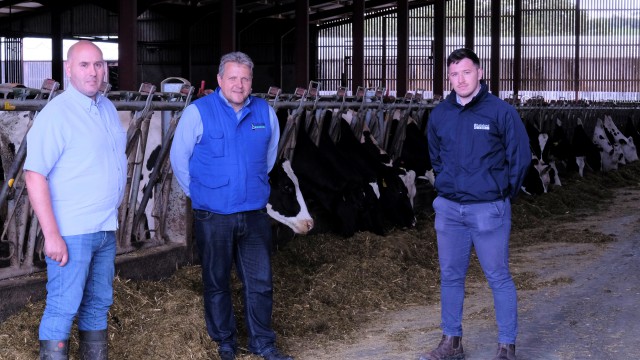 The pioneering Lakeland Agri / Premier Nutrition Transition Management System (TMS) saves Northern Ireland farmers thousands of pounds by ensuring the cow is well managed during the dry and early lactation period.
The pioneering Lakeland Agri / Premier Nutrition Transition Management System (TMS) saves Northern Ireland farmers thousands of pounds by ensuring the cow is well managed during the dry and early lactation period.
The TMS programme monitors cows and dairy herds across the UK. Of the nearly 300 farms running TMS, some 60 herds are from Northern Ireland. In total, nearly 78,000 cows are being recorded through TMS – approximately 8,000 are from Northern Ireland.
The TMS programme focuses on problems in cows such as ketosis, mastitis, milk fever and retained cleanings which are usually the result of poorly managed cows during the transition period.
The poor transition from the dry period into lactation is costing Northern Ireland dairy farmers as much as 5p/L.
Farmers who took part in Phase One of the TMS programme with Lakeland Agri and Premier Nutrition saw tangible results in terms of herd health as well as financial improvements. The TMS programme is open to Lakeland Dairies NI suppliers only.
Case study
One such farmer who has seen the first-hand benefits of TMS is Alistair Thompson from Co Tyrone.
Overlooking the Lakeland Dairies production facility at Artigarvan, Co. Tyrone, the milk from Beaverlodge Farms hasn’t far to go before it is processed into nutritious, fresh dairy produce.
The man at the helm of this proactive farming business is Alistair Thompson.
Previously Alistair would have been managing all aspects of the business on the ground; however, more recently, he has taken a step back to focus his attentions on dry cow and young stock performance, and to drive the business forward from a managerial perspective.
In the past, the herd of 500 cows would have been milked across two milking units, roughly two miles apart. One herd at the time would have been entirely grass based, while the second would have been housed.
Due to this set up, Alistair felt that the management was being stretched across both herds and due to concerns over the supply of good labour and wanting to simplify the system, the herd has been consolidated to now reside on one unit alone.
Alongside the consolidation process, the herd also underwent a phase of expansion.
Today, over 600 cows are milked on the farm, with the system evolving to now having all high performing, fresh cows housed, while the staler cows are grazed full time (with a small buffer feed).
18 months ago, Beaverlodge Farms joined the Lakeland Agri TMS programme, as a way of improving the efficiencies around the transition of their cows from the dry period into the milking herd.
The Lakeland Agri TMS programme is a management tool, whereby an independent assessor walks through the cows once per month to assess a number of key criteria in the fresh cow, and the close up dry cows, which when combined will give the individual farm a score to assess the success of their transition programme.
Michael Boyce, manager of the milking herd on Beaverlodge Farms, had the following to say on the farm, as it was 18 months ago.
“Body condition score (BCS) was a problem, as was lameness. We were having some issues with retained cleanings and milk fevers also. The fresh cows were sitting at around 38 litres on average at the time, with the overall herd sitting around 27.5 litres. The average days in milk was 215.”
Through their involvement in the TMS programme, the major issues that was affecting the herd were highlighted. Utilising this information and results of detailed forage mineral samples, the Lakeland Agri technical team suggested a number of changes that could be made regarding the transition period.
One of these was the inclusion of the Lakeland Agri Ultrabalance Dry cow mineral. The Lakeland Agri Ultrabalance dry cow mineral is a partial DCAD mineral, containing over 50% protected copper supply, high levels of minerals and vitamins and an anionic salts component designed to address the calcium balance in the animal and alleviate the risks of milk fevers and retained cleanings.
Eighteen months on and the herd is in a vastly superior position. There now is virtually no issues with retained cleanings or milk fevers. Variation around BCS has improved, as has lameness, and subsequently milk production also.
Michael had the following commentary on the herd currently:
The difference in the cows is like night and day. Lameness and particularly culling due to lameness has almost been eradicated. Body condition has improved massively. Current performance in the high/fresh cows is 44L on average, with the entire herd average sitting at 31L.
“Fertility has improved, with a lot more cows conceiving to first service and the overall herd empty rate down by 7%. Days in milk has decreased to 180 days currently, which shows we have really tightened up on the fertility in the system.”
Speaking on the success of the TMS programme, Alistair said:
“TMS has given us a focus on areas we probably knew were important but we just weren’t tuned into enough. Cows are cleaning really well and coming to their peak milk quickly. Peak milk is up six litres/cow, which adds up to real benefits for us. Body condition is exceptional. Our transition cost have reduced from roughly 2.8p/L to just over 1p/L, which is substantial for any farmer.
I can see the difference in getting the transition period right now; we have a lot more milk in cows, less transition issues, and a big improvement in fertility, which I heavily put down to the Lakeland TMS programme, along with utilising the Lakeland Ultrabalance Dry cow mineral also.
“I would highly recommend the TMS programme, the technical support, and advanced product selection of Lakeland Agri to other farmers who wish to fully exploit the potential of their herd.”
Looking at joining TMS?
As places are limited, any Lakeland Dairies milk supplier interested in submitting their name for Phase Two of the TMS programme which is set to commence should contact one of the Lakeland Agri Technical Sales team or call our Customer Services Centre today on 028 3026 2311.
The post Can you afford to leave 5p/L behind you? appeared first on Agriland.co.uk.
]]>The post From Clare to Kigali: Flying in-calf heifers 7,000km to change lives appeared first on Agriland.co.uk.
]]> “I’m the person that flies with the animals to Africa.”
“I’m the person that flies with the animals to Africa.”
This was the straight-forward way John Fitzgerald described his experience as an in-flight groom with Irish international charity Bóthar.
The sheep and beef farmer from Newmarket-on-Fergus, Co. Clare, explained that his family have always been firm supporters of Bóthar, starting with his parents: “We used to always buy presents for my parents at Christmas of chickens or a calf. We’d buy them a present out of Bóthar.”
Taking a more active role with the charity in 2005, when he was asked to store loading equipment for Bóthar, John explained that, by 2012, he started flying with the organisation to mind the livestock onboard and keep them calm.
This involves a multitude of animals, including: goats; chickens; pigs; bulls; and of course in-calf heifers – as well as AI straws and other such items.
Three years ago, John and Willie O’Gorman, also from Bóthar, were involved in flying three bulls – two Friesians and a Simmental – to Rwanda. The animals had been bought by the Rwandan government from Dovea AI in Co. Tipperary, with the grooms helping out as a favour.
“We’ve never lost an animal in flight and never had anything untoward happen in-flight. The people that give the animals are the real heroes though,” he said.
“In fairness, can you imagine going around asking someone to give an animal that’s worth €900 up to €1,400 and give it for free? Only for them and the people that send in donations to fly these animals to Africa, it wouldn’t happen. They’re the heroes; I’m only accommodating them.”
Turning to where he has transported animals to, John listed off nations across the world, including: Romania; Albania; Tanzania; and a number of other African countries.
John typically this week every year donates time – voluntarily again – to attend the National Ploughing Championships to sell tickets for Bóthar’s annual Tractor Draw at the showcase.
It’s Bóthar’s second biggest fundraiser of the year and, in its absence, he’s joined by a large team promoting and selling tickets for its stand-in – a still impressive Quad Draw.
He’ll even be on hand next Thursday when the draw comes live from John ‘Bull’ Hayes farm in Limerick on the same day it is held every year.
Rwanda
“Rwanda would be the big one for me; there’s a couple of great projects in Rwanda,” John said, highlighting his experience of Kigali, the capital of Rwanda, and other regions in the country.
After the genocide in 1994, it left an awful lot of widows in the country with absolutely nothing. And they’re still trying to help out those people. You can see it there when you’re with people in Rwanda; you see people that are missing limbs and people with scars, you see people walking with crutches.
“I went there first in 2013 and, with the differences I have seen there in seven years, I can’t believe how the country has come on.
“It’s still a very poor country – a man works there for €1.50 a day. So you can imagine how poor they are. There are plenty of kids there who are under 16 or 17; they’d be more or less destitute.
“Someone would take them in, and just for their food, they’d work for the day. It’s a very poor place but it has come on a lot.
You wouldn’t believe the ceremonies that are around there for the handing over of the cows, the dancing and the speech making – it’s just fantastic to watch, they’re just so appreciative.
“I saw a woman down there, an older lady; a widow as a result of the genocide. She’d taken on a few kids that had been orphaned and reared them along with one of her own.
“This woman had nothing – a few chickens and a cow. But, because she had a cow, it gave her status and a certain amount of wealth relatively.
She’d come up behind the cow – we were amazed by this – she’d put a pan behind the cow and the cow would poo into the pan!
“Myself and another Irish guy involved with Bóthar, Anthony O’Gorman, we were standing there gobsmacked by this. She said she was too old for bending down to pick up the cow pat.
“Another great thing that happens there is that, when a cow is donated from Ireland, the first heifer calf that she has is passed on to another family.
“It continues on – even when the cow has left here and she could be gone a long time, she’s still benefiting other families along with the family that got her originally, which is a great thing, passing on the gift.”
‘Life-changing’ animals
When asked about the need to help, John said that the Irish as a people in general “love to help”, adding: “There’s a great sense of satisfaction in helping someone else without really looking for recognition.
It is life-changing – it’s the difference between being in dire poverty and being a person of substance.
“When you’ve a small bit of money you can afford to do stuff – build reservoirs for rain water – you can now afford to put in a tank that will store rain water. That stops you having to walk two or three miles to a well.
“They put in gasifiers – they collect the manure from the animal, they put it into a little agitator, leave it to settle and take the methane out of that then.
“They collect the gas and cook with it.
An awful lot of people in Rwanda, because they cook with charcoal, have respiratory problems – and this eliminates that.
“There are a huge amount of benefits. With fertiliser alone, they can fertilise their crops.”
The farmer explained that cows are given to people deemed to be most in need. He added: “The Irish dairy cow will give three, four or even five times more milk than the local cow – everyone wants an Irish cow!”
Bóthar is currently running a Covid-19 campaign – a quad draw – to raise funds for its programmes in Rwanda, Zimbabwe, Malawi and Nepal. The draw will also see three children’s motorised cars for younger members of the family up for grabs.
For full details on the draw and to buy your ticket, go to: www.bothar.ie.
The post From Clare to Kigali: Flying in-calf heifers 7,000km to change lives appeared first on Agriland.co.uk.
]]>The post Cow mattress systems for maximum comfort and productivity appeared first on Agriland.co.uk.
]]>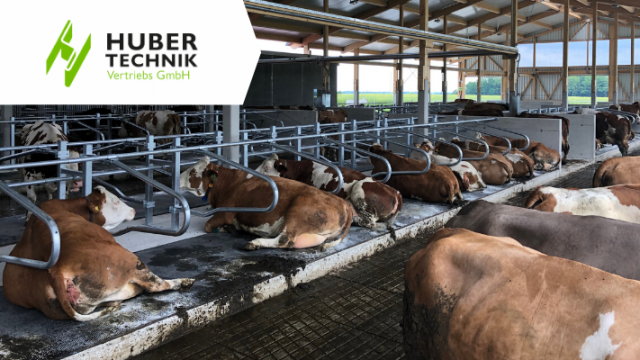 Consistency in comfort flooring is essential to ensuring high comfort and reduced stress levels in dairy cows.
Consistency in comfort flooring is essential to ensuring high comfort and reduced stress levels in dairy cows.
High-quality rubber flooring like Huber Technik’s comfort mattress system provides the right level of soft, yet firm flooring for dairy cows.
Consistent comfort for dairy cows means low levels of stress which in turn means high productivity and farm profitability. It is in every farmer’s interest to maximise cow comfort levels to ensure healthy animals, high yield, high fertility and smooth day-to-day farm operations.
Key factors
There are many cow mattress solutions available to farmers, so what are the key factors you should consider?
Farmers should think of comfort flooring as a long-term investment and the following should be taken in to consideration:
- Will it provide the optimum level of comfort required by dairy cows?
- Will the mattress system improve cow lying times?
- Where is the mattress manufactured and does it comply with European standards?
- How easy is it to install?
- Is it easy to maintain and clean?
- How long is the system expected to last and does the product have a warranty?
- Will this investment ultimately contribute to good cow health and productivity?
- Are there reference farms? See systems in use and get feedback from other farmers.
Dairy farmer Colin Harty in Co. Waterford went through this decision-making process when he installed the Huber Technik 4GS soft bed system on his farm four years ago.
The 4GS soft bed system is a durable top cover with foam base which is anchored in place with bolts. This quick and easy to install system comes in a full roll which is cut to size. Colin installed the mattress system directly when the shed was being constructed.
“We fitted it as we were building the shed before the cubicles went in,” said Colin.
“We rolled out the roll of foam, sealed it up with the tape and plastic, double-lapped and taped on top [so the water can’t get in] and then ran the roll over it. We screwed it in with 6 or 8mm rawl bits into the bed and it hasn’t moved yet.”
Colin houses his older heavier cows on this system which weigh approximately 600-650kg (and heavier when in calf). Cows are housed roughly from mid-October to mid-March (depending on the season).
The Huber Technik mattress system has been a great success on this Waterford dairy farm. In terms of bedding, Colin has opted for peat after initially using lime and sawdust.
The peat is bought in bulk (approximately £1,500 for a half arctic load) and has been more cost effective for the six months the cows are housed. The farmer is also reporting lower somatic cell counts (SCC) which average 68-70.
Huber Technik knows what cows like
Huber Technik is a specialist in livestock comfort flooring. This family-run company was established in 1925 and has been making cow mattress systems since the 1990s from its facility in Erding, Germany.
With over 30 years of experience in cow mattress systems, Huber Technik knows what cows like.
The product range includes:
- Soft Bed Systems (4GS, 8GS and 8GS WINGS): A durable top cover with foam base which is anchored in place with bolts;
- N-Series Rolls:
- N-15 Roll and N-18 Roll: Suitable for alleyways, holding areas, parlours;
- N-20 Roll and N-33 Roll: Suitable for free stalls and tie stalls;
- The N-Series Rolls have different degrees of softness which are achieved by special studs (pimpling effect) on the underside.
See the full product range on: www.cow-comfort-huber.com.
Huber Technik at a glance
- Huber Technik products are exclusively made of new unvulcanised tyre compound;
- Huber processes 100% new rubber and not scrap granules;
- Raw materials undergo stringent quality checks and their quality processes ensure a consistent durable end product designed for cow comfort;
- All Huber Technik products contain high-quality raw materials that provide, among other things, aging resistance and ozone protection. Low priced natural rubber compounds do not contain these stabilisers. When they are exposed to light and air, they can become brittle. Comfort flooring made of natural rubber often contains chalk as a filler to reduce costs;
- Huber Technik is one of the only companies worldwide that produces rubber flooring for cows that is certified PAH free. PAH – polycyclic aromatic hydrocarbons – are a group of over 100 different chemicals. PAHs are known for their carcinogenic, mutagenic and teratogenic properties;
- A cow’s udder comes into contact with rubber only two times: in the milking parlour (which must be PAH free); and while lying down on a mattress. Ensure you’re making the right choice by sourcing certified PAH free rubber from Huber Technik;
- Huber Technik is owned and managed by third and fourth-generation family members. It’s been a family business from day one and for nine decades, it has been producing superior quality rubber products.
Huber Technik: Comfort, consistency and durability with a proven German brand
Huber Technik provides the optimum level of comfort for dairy cows. All products are subject to third party testing through the DLG with reports available on the company’s website. The DLG is a quality mark which is awarded to agricultural products. Products with the mark have successfully passed a DLG usability test according to independent and recognised evaluation criteria.
Huber Technik product is easy to install – it comes in a roll and can be cut to size. This seamless comfort system is easy to maintain and clean. Above all, the company offers a 10-year warranty on all Huber Technik products. Huber Technik product is distributed worldwide and the company is proud to say it has virtually zero warranty claims.
Because Huber Technik comfort rolls deliver the optimum comfort levels for dairy cows, lying times are improved along with good cow health and productivity. A consistent high-quality rubber mat/mattress helps the cow to feel safe under foot which reduces stress. Slippery and uneven ground is a stressor to the dairy cow.
Don’t take Huber Technik’s word for it; for information on reference farms, just click here
Limited offer
Huber Technik’s international sales partner, Agri-Comfort, is offering free brisket board with every Huber Technik mattress sale, for the next 30 days. Find out how you can avail of this and other offers here
Huber Technik is distributed in the UK through IAE. For more information, just click here
For further information
Talk to Agri-Comfort today here; or phone Ronan Gleeson on: +353 (0)87 779 2868.
The post Cow mattress systems for maximum comfort and productivity appeared first on Agriland.co.uk.
]]>The post Two reasons why activity monitoring can improve your dairy reproduction results appeared first on Agriland.co.uk.
]]>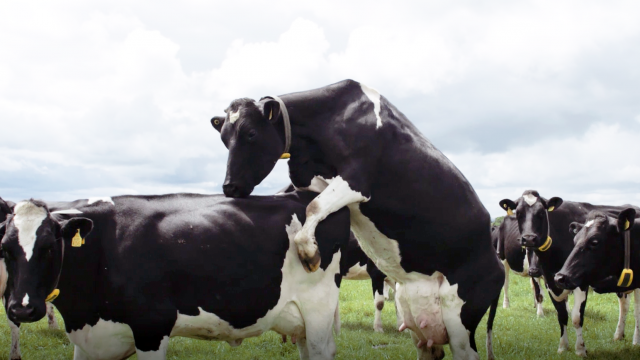 It has been well documented that a single missed heat on an Irish grazing farm can cost a dairy farmer €250. In today’s dairy economy, that’s a lot of money to use someplace else – especially if multiple heats are missed.
It has been well documented that a single missed heat on an Irish grazing farm can cost a dairy farmer €250. In today’s dairy economy, that’s a lot of money to use someplace else – especially if multiple heats are missed.
“When heats aren’t detected, it leads to more time and labour spent tracking, drafting and breeding cows,” says Rudie Lammers, product manager for Nedap.
“Activity monitoring systems help dairy farmers catch cows in heat for timely insemination,” he added.
Here are two reasons the Nedap CowControl activity monitoring system can get more cows pregnant faster, resulting in more money in your pocket.
Reason one – Track cow activity 24/7
Although you can visibly detect a cow standing to be mounted, it is not fail-proof. And, it’s not realistic to monitor cows 24/7 – especially when they are on pasture most of the day.
There are only 1.5 mounts/hour/cow and each mount lasts four-to-six seconds. A cow’s heat lasts six-to-eight hours.
Collectively, these numbers tell us cows are in heat for one-third of the day and spend just three-to-five minutes standing to be mounted; that’s a very small window to catch a heat.
Heat activity of cows tends to be lowest during feeding and milking time; the time you or your staff are most likely with the cows. However, cow activity is at its highest while you’re probably sleeping.
Approximately 70% of mounting occurs between 7:00pm and 7:00am when cows have limited distractions².
“Activity monitoring takes on the full-time job of heat detection,” says Lammers. “These systems also rely on other indicators, like sniffing and chin resting, to make sure heats don’t get missed.
Data can also provide actionable insights about the optimum time to inseminate for the highest chance of conception.
Irish dairy farmer Brian Mooney used tailpaint for heat detection in the past. However, tail-painting was nearly impossible, because he had to go out to the fields and just watch cows.
“The cows will pile around you and you expect the cows to move,” he said. That was a very hard job without a monitoring system.”
Now, he uses Nedap CowControl on his phone to look which cows are in heat.
“It is very accurate, you can see cows turn up 21 days or whatever after the last time. It’s good; it’s very good,” Mooney said enthusiastically.
Reason two – Quickly find cows not showing heat
Sometimes a cow won’t show a heat because of environmental or metabolic factors, like sore feet or legs, heat stress or ketosis complications.
Also, she simply may not be cycling (annovular). With an activity monitoring system, you can act proactively by finding these problem cows quicker, then solving the cause of the fertility problem or providing an effective treatment to resolve it – ultimately, getting them bred faster.
“Instead of missing the heat altogether, and waiting for the next cycle, activity monitors give you insights to dig deeper into why a cow didn’t come into heat,” says Lammers.
“Insights from data can help you make a management decision to get a cow bred as quickly as possible, regardless of why she isn’t showing heat.”
Using an activity monitoring system allows you to catch cows in heat and take early action when there’s a problem.
The result: Improved reproductive outcomes and money in your pocket.
Enda Doran, a dairy farmer in Ballinasloe, Co. Galway, also experiences the benefits of Nedap CowControl.
Previously, Enda would rely on tailpaint, but was not overly successful; submission rates were about 50% in three weeks. However, since installing Nedap, it was already up to 97% in the first spring.
“And we completed a 100% submission rate in less than four weeks, which we could never come near that before with the old system,” Doran said.
More information
Would you like to get to know more about Nedap CowControl? To learn more, just click here
You can also contact your local Nedap distributor; they can provide comprehensive information about Nedap CowControl technology and how it can benefit your business.
The post Two reasons why activity monitoring can improve your dairy reproduction results appeared first on Agriland.co.uk.
]]>The post ‘All the air power you need’: Applied to showcase new compressor at ‘Ploughing’ appeared first on Agriland.co.uk.
]]>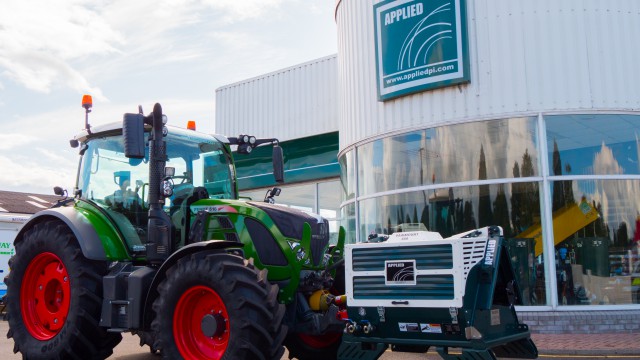 Applied – the Offaly-based manufacturer of blasting machines and air compressors – will show its Applied Varimount 350 PTO Compressor and range of blast machines at next week’s National Ploughing Championships (September 17-19).
Applied – the Offaly-based manufacturer of blasting machines and air compressors – will show its Applied Varimount 350 PTO Compressor and range of blast machines at next week’s National Ploughing Championships (September 17-19).
Remember to come by and visit the Applied stand at the National Ploughing Championships at Block 3; Row 13; Stand 272 – where Applied will also be running a competition. To be in with a chance to win an Applied blast machine, simply order an Applied Varimount 350 PTO Compressor.
The Applied Varimount 350 PTO Compressor – as its model designation suggests – has an impressive air output of 350ft³/minute and can be mounted on either the rear or front PTO of a tractor.
Applied knows all about compressed air. The company has been designing and manufacturing blasting machines that require enormous volumes of compressed air for over a decade, so it has had a head start when it set out to design a PTO compressor.
And, last year, after four years in development, the company launched the Applied Varimount 350 PTO Compressor.
Flexibility; check
Unlike other mobile compressors on the market, Applied’s VariMount 350 is designed to be powered from either the front or rear PTO of your tractor.
This eliminates the challenges of towing a bulky, portable, diesel-powered air compressor behind your tractor. In addition, because the VariMount 350 shares your tractor’s engine, it means your diesel costs and emissions are immediately halved.
Are you currently spreading slurry with an umbilical system and need to blow out the slurry line? Or perhaps you need to clear debris from a combine harvester before it leaves the field? With the VariMount 350 mounted on your tractor, you’ve got all the air power you need to complete any task.
Back in the farmyard, attach an Applied Blasting Machine to the VariMount 350 and you’ve got the blasting power to clean and restore old tanks or rusty farm machinery.
And it’s not just the agri industry which benefits from the versatile VariMount 350; its useage potential extends to building contractors, fabricators, and serious hobbyists.
Engineered and built In Ireland
Given the engineering expertise behind this machine, it’s not surprising that the company has patented the innovative design of the VariMount 350.
Its custom features include the Applied MAGNUM air end, incorporating its own gearbox and built to produce an impressive 350ft³/minute .
Then there’s the patented pneumatic control system, because Irish weather and electronics don’t mix. The company has designed the oil cooler fan to the highest specification to keep the compressor oil temperature regulated for continuous operation plus minimal downtime.
And, finally, it’s designed and manufactured in Birr, Co. Offaly.
Further information
For more information on Applied’s Varimount 350 PTO Compressor, or just a general chat about how any of its machines could improve efficiencies around your farm, contact a member of the sales team on: 057-91-37929; or: 086-196-0209.
Alternatively, go online at: www.appliedpi.com, or simply click here
The post ‘All the air power you need’: Applied to showcase new compressor at ‘Ploughing’ appeared first on Agriland.co.uk.
]]>The post Suffolk Sheep Society: 125 years of breeding excellence for Irish farmers appeared first on Agriland.co.uk.
]]> The Suffolk Sheep Society has been a major contributor to the sheep industry in Ireland for over 125 years, with Henry Strevens from Athleague in Co. Roscommon the first recorded Irish member of the Suffolk Sheep Society.
The Suffolk Sheep Society has been a major contributor to the sheep industry in Ireland for over 125 years, with Henry Strevens from Athleague in Co. Roscommon the first recorded Irish member of the Suffolk Sheep Society.
He started his flock in 1891, closely followed by R L Moore from Derry two years later. It is interesting that the Suffolk Sheep Society has been in Ireland since before Scotland and Wales.
The Suffolk Sheep Society will once again be in its usual location at the main entrance to the National Sheep Breeders’ Association’s (NSBA’s) sheep tunnel at the National Ploughing Championships, in Co. Carlow, from September 17 to the 19. It will be showing off all that’s good with the breed.
National Ploughing Championship Suffolk stand
There will be live sheep at this year’s stand, so why not come along and enter the “Guess the Weight” competition.
The top three closest ‘guesses’ will each win a bag of Suffolk goodies, with first prize getting a €250 voucher towards the price of a Suffolk purchased at any of the Suffolk Sheep Society endorsed sales in the autumn.
Society president Susan O’Keeffe said: “In my year as president, I have had the honour of representing the society at lots of events throughout the UK and Ireland; but the National Ploughing Championships is something special and I’m really looking forward to it.
“We have a great new stand in a prominent position showcasing all that’s positive with the Suffolk breed in relation to the commercial farmer – and our Irish members are a great lot as well.”
The €250 voucher can be used in the purchase of pedigree Suffolks at any of the following Suffolk Sheep Society endorsed sales. Click on the links below for more information.
Please check the Suffolk Sheep Society website for details, new sales or changes. The voucher cannot be used to purchase non Suffolk Sheep Society pedigree animals.
- NE Suffolk Breeders’ Club: Farmers’ information evening and sale (Carnaross Mart, September 25);
- Roscrea multi-breed evening sale (Roscrea Mart, September 26);
- West of Ireland Club show and sale (Roscommon Mart, September 28);
- Donegal Suffolk Club sale (Raphoe Mart, October 18).
High demand for Suffolk tups
With 125 years of history, the Suffolk Sheep Society is not slowing down and, indeed, a new momentum has been found in recent months.
This has resulted in standing room only at Blessington Mart on Saturday, August 3, as both commercial farmers and pedigree breeders flocked to the Lamlac-sponsored South of Ireland branch of the Suffolk Sheep Society’s Premier Sale.
Over half the ram lambs sold went to commercial farmers, who were typically buying in the €400-900 price range. Ram lambs overall achieved an excellent 75% clearance with an average of €931.
To get the full sales report from this year’s Premier Sale, just click here
Number one for taste – 70% choose Suffolk lamb
A recent descriptive sensory test carried out by the University of Ulster at its food and consumer testing suite has thrown up some great results for the Suffolk.
The attributes measured were appearance, aroma, taste, texture, overall flavour, succulence and tenderness. The lambs used in the study were Suffolk cross, Texel cross and Charollais cross.
All three scored highly in the test, however, the Suffolk cross lamb scored highest for all attributes. It was statistically significantly higher for appearance, aroma, taste, texture and flavour.
Participants were also asked to note their preferences with 70% selecting the Suffolk as their number one choice. For more information on the report, just click here
‘Join the society’
If you wish to join the society, simply email: [email protected].
Alternatively, go to the website by clicking here
The post Suffolk Sheep Society: 125 years of breeding excellence for Irish farmers appeared first on Agriland.co.uk.
]]>The post How this Co. Tyrone poultry farmer achieved a significant increase in egg production appeared first on Agriland.co.uk.
]]>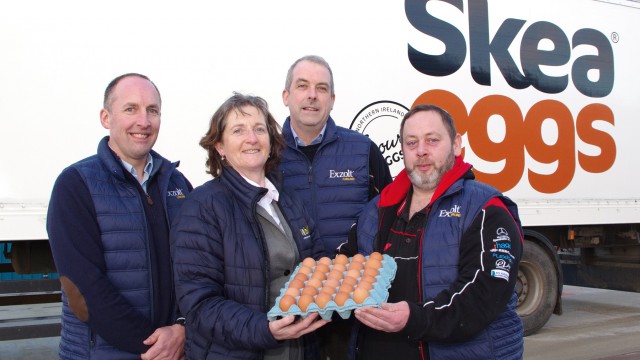 After careers in horticultural management and transport, Colin Moore wanted to get back into farming and, in 2007, he decided to start a new poultry venture near Pomeroy.
After careers in horticultural management and transport, Colin Moore wanted to get back into farming and, in 2007, he decided to start a new poultry venture near Pomeroy.
“I reckoned poultry was a profitable way to farm, so the first birds went into the shed in December 2007 and the second shed went up in 2009,” explained Colin.
He now has 14,000 free range layers supplying Skea Eggs in two separate sheds, with the two flocks of different ages kept apart. He keeps the birds from 16 weeks to 74 weeks-of-age with a four-week turnaround between crops. He has good biosecurity measures and clean-down regimes before new birds come in.
‘We just weren’t getting the same results’
Despite all this, Colin was aware that he had an ongoing issue with poultry red mite. “The first couple of years were great, but after that we just weren’t getting the same results.
“We’d disinfect during wash out and spray whenever possible, but it would just keep the problem at bay. It really got me down as we never seemed to get rid of the mites completely and they’d keep coming back. At times I was bitten by them and my wife wasn’t pleased when they’d get on me or my clothes,” he added.
Colin’s vet, Mr. Ian Stewart from Parklands Veterinary Group, set red mite traps and these showed a high level of infestation on farm. Luckily, Ian was able to prescribe a newly licensed medication for the treatment of poultry red mite.
One of the problems with treating red mite is that they creep into the tiniest crevices and only come out at night to suck the blood of the hens. They’re really hard to eliminate because they reproduce so rapidly – every seven to 10 days.
“The new treatment is administered in the hens’ drinking water and mites are killed when they ingest the treated blood. Mites can be controlled by giving two doses, one week apart.
“Of course, it’s important to make sure that you’re not reintroducing mites, so biosecurity is an important way of staying on top of the problem,” explained Ian.
Colin found administering the new product via the dosing pump very easy and straightforward and it wasn’t long before he noticed a difference.
“Within a week, the shells on the eggs laid by the older birds were a darker brown colour and both sheds were much quieter at night – barely a rustle,” explained Colin.
By the time of the second dose, I could see the colour coming back to their combs and the laying pattern was much closer with the eggs coming earlier in the morning and tighter together.
The biggest impact, however, was in the weeks following both treatments as Colin monitored increased egg production, with the older birds seeing a rise in production output of 3% and it’s still improving.
“I’ll admit I was surprised by the results,” added Colin. “Although you could see the effect of mite on the behaviour of the hens, you couldn’t quantify the effect on productivity. It was a constant niggle and it was hard to tell what harm it was doing because it had been there for years.”
And now production’s back on track, Colin is keen to make sure the farm stays red mite free. “We’ve tightened up even further on biosecurity and we’ll continue to monitor for mites so they don’t get a hold again,” he concluded.
Further information
For more information on the challenge of controlling red mite, visit: www.redmiteexpert.com.
Farmers wanting to assess and reduce the red mite presence on farm should talk to their poultry vet and integrate any treatments into a wider biosecurity and flock health planning strategy – use medicines responsibly.
Further information is available from your veterinary practitioner, the product SPC or MSD Animal Health, Red Oak North, South County Business Park, Leopardstown, Dublin 18, Ireland, on: +353 (0)1 297 0220; or by email at: [email protected]; or online at: www.msd-animal-health.ie.
The post How this Co. Tyrone poultry farmer achieved a significant increase in egg production appeared first on Agriland.co.uk.
]]>The post Pitfalls to avoid when shopping for your next tractor…from Case IH appeared first on Agriland.co.uk.
]]>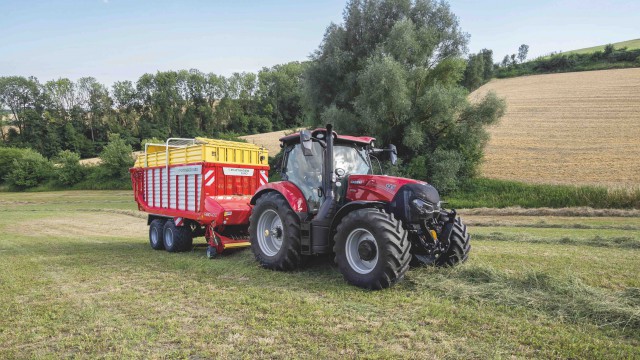 For most farmers, changing a tractor is one of the biggest investment decisions of the year. If you are in the market for a tractor this spring, then here are some questions to run by the dealers you speak to that you might not think to ask.
For most farmers, changing a tractor is one of the biggest investment decisions of the year. If you are in the market for a tractor this spring, then here are some questions to run by the dealers you speak to that you might not think to ask.
Loader compatibility
If you are ordering a tractor and loader from different manufacturers, make sure that it will fit easily without the dealership having to clock up lots of workshop hours and therefore cost.
Most tractor manufacturers will offer factory-fit loader options, which will be covered by the full manufacturer’s warranty and can offer a number of advantages, including lower overall cost, as there is very little dealer time required when preparing the machine pre-delivery.
What’s more, it is worth considering how easy it is to unhitch the loader – a tractor and loader made by the same manufacturer can often be unhitched in under 90 seconds; whereas alternatives can be trickier and take more time.
If you’re a livestock farmer who is often unhitching the loader, this is a real consideration.
Manoeuvrability
Just because different makes/models are similar in terms of power output doesn’t mean they’ll be a similar size. So, while it sounds obvious, it is important to try a machine on your own farm.
This will ensure that it is a suitable height for accessing the buildings on your farm, and that it is manoeuvrable enough to use in your yard.
Size and weight may also be important considerations if you are planning to use the tractor for draft work – where a heavier tractor, or one that you can add additional weights on to, might be an advantage.
Do also check the steering stops on demonstration machines, as correct adjustment makes a world of difference. But make sure that the wheels don’t hit the fenders or bodywork.
Transmission options
When it comes to choosing a gearbox on your new tractor, it’s easy to just ask for the ‘same again’ and stick with what you know. This does limit your options however, and you might be missing out on something that would transform your working day.
Transmission options have changed dramatically in recent years, so make sure you at least try out what’s available to see what works best for you.
For example, the new Case IH ActiveDrive 8 transmission available on the Maxxum range delivers class-leading fuel efficiency, smooth changes and selectable transmission automation, to make tasks like transport and loader work easier and quicker.
Ask your dealer to talk you through all the options available and take the opportunity to try them out before you make a final decision.
Rated HP versus maximum HP
Rather confusingly, different tractor manufacturers take a different approach when it comes to model numbers and rated horsepower, so it is important to make sure you know exactly what you are getting and can compare prices appropriately.
Some manufacturers have a power boost that only works under certain conditions, such as when using the PTO and also driving the tractor – for example, when baling.
Sometimes it’s this boosted power rating that is quoted on the bonnet, making you believe that you are getting a more powerful machine than you actually are.
However, for example, a Case IH Maxxum 145 is rated at 145hp and boosts to a maximum of 174hp – be careful you are getting quotes on a like-for-like basis and that you are ordering what you need.
Buying new or used
Many farmers plan to buy a nearly-new machine rather than a brand-new one, simply because of the lower initial purchase price.
When considering the total cost of ownership, however, often buying a new machine makes more sense, particularly when considering the competitive finance and warranty offers available.
These deals can also mean that the monthly cash flow is easier if purchasing a new machine, due to lower interest rates and more competitive payment terms.
Speak to your dealer about this – you may just find it works out cheaper overall to have a shiny new machine in the yard, and this also provides the advantage that you can specify it exactly as you want – only paying for extras that you will actually use.
Further information
Case IH currently has competitive finance offers available on a wide range of tractors, including the Farmall A and C, the Maxxum and Puma ranges, as well as Case IH balers.
Most Case IH tractors can be ordered loader-ready from the factory, for quick and easy fitment of the appropriate Case IH loader.
For more information, or to find your local Case IH dealer Click here
The post Pitfalls to avoid when shopping for your next tractor…from Case IH appeared first on Agriland.co.uk.
]]>The post Using transition milk – the next essential feed after colostrum appeared first on Agriland.co.uk.
]]>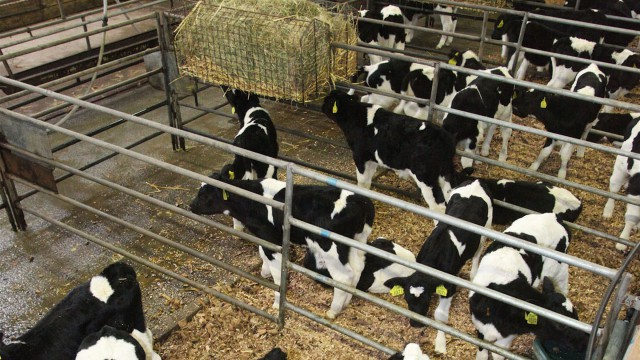 A progressive dairy farming business has made multiple changes to its system over a seven-year period, but what has remained steadfastly consistent is its successful approach to calf rearing.
A progressive dairy farming business has made multiple changes to its system over a seven-year period, but what has remained steadfastly consistent is its successful approach to calf rearing.
Among other changes, Dairy Farmer of the Future award winners JJ & Kiki Willcocks have altered their breeding policy and calving pattern at Tregleath Farm, Bodmin.
What has not changed is the system of rearing calves which they implemented in October 2011.
The Shine Once-a-Day feeding system worked for them in 2011 and continues to deliver on many fronts.
It was initially adopted to fit in with a busy family lifestyle and this still applies but, with seven years’ worth of experience, Shine Once-a-Day is now used because of the results it delivers, including doubling birth weights within eight weeks to achieve 350kg at breeding.
“Milk powder definitely works better in a block calving system like ours,” said JJ.
The milk powder is supplied by Launceston-based Berrys Agriculture while Stuart Fry advises JJ and Kiki on behalf of Bonanza Nutrition.
Bonanza has launched Transformula, the 1st transition milk replacer available, to offer the correct nutrition to baby calves, Stuart explained. This is the only addition to the system when transition milk produced by the cows is in short supply.
The herd at Tregleath produces an annual milk yield average of 7,500L at 4.5% butterfat and 3.5% protein with milk sold to a local cream producer.
The breeding policy at Tregleath was initially a three-way cross of Brown Swiss, Norwegian Red and New Zealand Friesian. However, that has changed to Brown Swiss, Norwegian Red and Montbeliarde, producing a slightly bigger and more robust animal at two years old with a more saleable bull calf.
The calving pattern has shifted from two 12-week calving groups, one in the spring and one in the autumn, to a single 12 week calving block, from early August to mid-October.
This makes rearing calves and getting them off to a good start even more important as they must make 350kg at around 14 months-of-age to ensure they calve in the early part of the calving block at around 23/24 months-of-age.
Kiki rears the calves at Tregleath, using the following time scale, finalised by weaning at eight weeks:
- 0-7 days colostrum;
- 7-14 days transition milk or Transformula;
- 14-21 days 600g/day Shine Once-a-Day;
- 21-42 days 700g/day Shine Once-a-Day;
- 42-56 days 600g/day Shine Once-a-Day;
- 8 weeks wean.
Water, straw and concentrates are offered ad lib throughout this period.
According to Stuart, feeding milk once-a-day has been found to reduce stress in calves, increase dry feed intakes and growth before and after weaning. It also allows farmers to allocate more time to looking after sick calves which helps to reduce disease pressures on the farm.
For more information Click here
The post Using transition milk – the next essential feed after colostrum appeared first on Agriland.co.uk.
]]>The post Robotic milking the first GEA Monobox in Northern Ireland appeared first on Agriland.co.uk.
]]>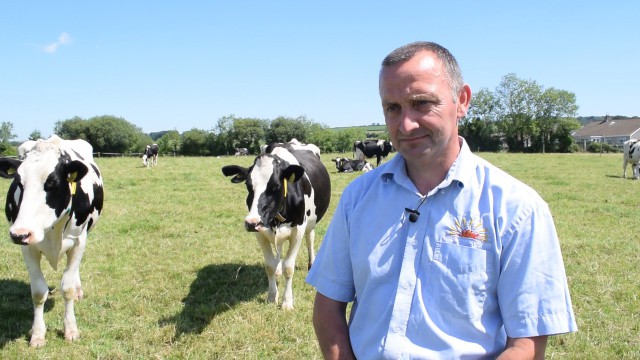 Derick, Sylvia and Hall Donnell farm 73ha beside Ballymogorry village, just north of Strabane in Co. Tyrone.
Derick, Sylvia and Hall Donnell farm 73ha beside Ballymogorry village, just north of Strabane in Co. Tyrone.
The farmyard is centrally situated, with approximately 39ha around the yard and the remainder in outlying farms.
The family has been milking approximately 100 Holstein-Friesian cows since they took over the farm in 1989. In 2011, they installed a 14-unit, 90-degree Milfos swingover parlour from McKnight Dairy Services.
A farm open day will take place on Wednesday, October 17 from 11:00am to 3:00pm on the Donnell family farm at Park Road, Ballymagorry, Strabane, BT82 0AN (signposted from the A5 in Ballymagorry village).
The cows were milked twice daily at 5:00am and 5:00pm, with an emphasis on grass production and feeding from mid-March until Mid-November, depending on annual conditions.
The farm objectives are to:
• Maximise overall farm profit;
• Have a labour-efficient working environment;
• Utilise forage from both grass and ensiled grass to its full potential;
• Make efficient use of nutrients (fertiliser and slurry) while meeting current nitrates legislation.
The new robot system
Robotic milking was always a plan in the background for the Donnell family and, when a 12,000l GEA tank was installed in 2012, it had to be robot ready.
“Last year we considered upgrading the out-of-parlour feeders and contacted our local dealer McKnight Dairy services.”
After a few visits from dealers, James McKnight and Roy Clarke of GEA Ireland, “the option of going ahead with robotic milking looked more appealing with the introduction of the Monobox to Northern Ireland”.
The milk price was good and we could see the potential benefits to our farm objectives and lifestyle; but really, the cows made the decision.
“Yields were steadily increasing each year, from 7,200l in 2010 to 9,600l this year. Cows needed milking three times a day,” according to Hall.
Installation and training
The installation went according to plan. The design was supplied by GEA’s Declan Casey, who provides technical support in the local dealers.
“James, David and their team at McKnights do very tasty work and were very efficient with the installation,” commented Hall.
The open design of the Monobox, along with the silent operation and quick attachment, made the start-up easier than expected.
“For two days we penned the cows behind the robots and guided them. Over the next two weeks, the number of cows we needed to collect dropped every day,” according to Hall.
The grazing block around the yard is divided by a public road and an underpass was not an option due to water levels. A grazing plan and layout was designed by GEA to allow cows to access grass for 16 hours on a daily basis on approximately 20ha and eight hours at the feed fence, depending on the time of year and weather conditions.
After two weeks, cows were allowed access to grass using a selection gate. Cows have access to Block A from 2:00am to 10:00am (after they have been milked). Then, as they return for a second milking, they are rewarded with fresh grass in Block B from 10:00am to 6:00pm.
Any cows that come in after 6:00pm can access feed at the feed fence and stay in for the night.
“Allocation of grass is very important to encourage cows to move voluntarily. May was a difficult time to start this year with a big flush of grass; but once I got used to the new allocation, and we got around the block a couple of times, the cows were coming really well – with no cows to collect since mid-Summer,” remembered Hall.
Hall’s top three benefits for the herd:
- “Now the cows are milking three times a day; they are carrying less milk and not waiting around to be milked. I have noticed an improvement in legs and lameness.
- “Cell counts always ran around 150 over the last few years. For the last few months, we are down around 90; it has increased slightly recently as cows are due for drying off. The conductivity is so accurate it allows me get in early and treat with udder mint; the Monobox also allows me to separate per quarter, giving me more control.
- “In the last couple of weeks when I started drying off cows, I noticed a huge improvement in teat condition; they are soft and healthy looking and there are no signs of warts or cuts on them. The cows temperament has changed; they are quieter to work with.
Hall’s top three benefits for himself:
- “I don’t set the alarm anymore; in the morning, I just get up when I wake.
- “I had a lot of work to catch-up with after the start-up, and we are building the separation area; but it’s amazing how much more time I have.
- “The flexibility is great if I’m at silage or spreading slurry. I don’t have to stop to get cows in and can just carry on and get the job finished.
Hall’s future Goals:
- “1 million litres from 100 cows or less.
- “We currently use sex semen on between 22 and 24 cows each year for replacements. And then run the stock bull. I might start to breed some more heifers, as there is a good demand for our stock at the minute.
- “Continue to enjoy farming.”
Features and Benefits of the Monobox
On behalf of the Donnell family, we would like to thank you all for your kind donations to their charity. We would also wish to extend our thanks and appreciation to the Donnell family for opening their farm to the public to showcase the new GEA Monobox system – the latest in robotic technologies.
To find out more about the GEA Monobox click here
The post Robotic milking the first GEA Monobox in Northern Ireland appeared first on Agriland.co.uk.
]]>The post ABP opens Angus Youth Challenge for more entries appeared first on Agriland.co.uk.
]]> One of Northern Ireland’s leading meat processors, ABP, is calling for new entries to the ABP Angus Youth Challenge.
One of Northern Ireland’s leading meat processors, ABP, is calling for new entries to the ABP Angus Youth Challenge.
This is a skills-based competition offering a host of opportunities for teenagers to develop skills and knowledge of the agri-food industry from farm to fork, in a fun and challenging way.
“The ABP Angus Youth Challenge reaches out to young people with an interest in agri-food production at a key stage in their education,” explained George Mullan, managing director of ABP in Northern Ireland.
The enthusiasm of those who have already taken part in the challenge has been fantastic.
“We’re now looking for more entries from groups of 14 to 16 year olds who can showcase their knowledge and demonstrate a strong interest in agri-food production by representing their school, club or community with pride.”
Entry is by short video, followed by a shortlisting interview to reach the semi-final. Semi-finalists will compete at a national heat in March 2019 in front of an independent judging panel of industry experts and the media.
The teams that make the final stage will be awarded five Aberdeen Angus calves each at a high-profile, public prize-giving ceremony during the 2019 Balmoral Show.
They will then go on to rear their calves through to finishing and fully benefit from the net profit at sale of the calves to ABP during an 18-month programme with ABP. An additional £1,000 cash prize will be awarded to the overall winning school/club or group.
The ABP Angus Youth Challenge is organised in conjunction with the Northern Irish Angus Producer Group.
“Reaching the final of the ABP Angus Youth Challenge means travel; first-hand insights into a leading and award-winning beef processor; building experience for future careers whilst working on exciting projects that support ABP’s quality-beef supply chain,” explained Charles Smith, general manager of the Northern Irish Angus Producer Group.
The 2018 finalists currently participating in the programme are pupils representing Belfast Royal Academy, Enniskillen Royal Grammar, Rainey Endowed Magherafelt and St. Louis Grammar Ballymena.
Entrants do not have to live on a farm to take part. Closing date is 12:00pm on November 30, 2018.
Interested parties should contact Arthur Callaghan, ABP by phone at: 0044-788-448-3929 or by email at: [email protected].
To enter click here
You can also find us on Facebook: #ABPAngusYouth.
The post ABP opens Angus Youth Challenge for more entries appeared first on Agriland.co.uk.
]]>The post Thinking of buying a new tractor? Here’s what to do appeared first on Agriland.co.uk.
]]>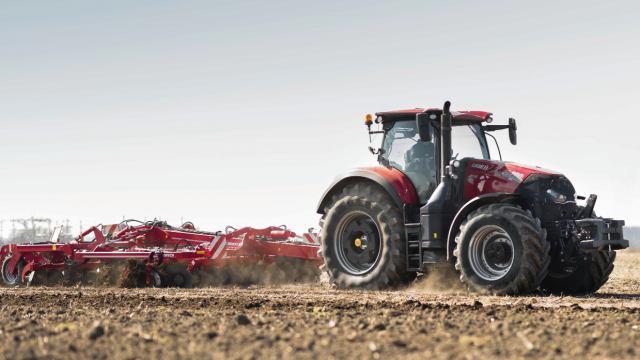 Horsepower costs money. Before you even call a dealer, take a moment to think about what power you need from your next tractor and the jobs it will be doing.
Horsepower costs money. Before you even call a dealer, take a moment to think about what power you need from your next tractor and the jobs it will be doing.
Add in any other ‘must-haves’ such as front linkage, number of spools, etc. and you can quickly narrow down the options available to you.
Transmission choice can make a huge difference to price as well, so try out different transmissions to see what will suit you best.
Check that the dimensions of the machine so it will fit in your yards and buildings and the way you plan to use the tractor and think ahead; if your next baler or slurry tanker is going to be bigger, make sure your new tractor will be powerful enough to run it.
New or used?
The important consideration here is total ownership cost. If you buy second hand, then the purchase price is obviously lower; but older tractors tend to spend more time in the workshop and could cause unexpected downtime or repair bills.
End of life value might be lower as well, depending on the age and number of hours.
Of course, new tractors are more of an investment; but there are competitive finance deals around which can often mean the monthly cost isn’t too much different from a used machine if you are buying on finance and you can also be sure of a good warranty and dealer support.
Try before you buy
It is easy to form pre-conceived ideas about particular tractor models or brands, but – whilst it is important to do your research and speak to other farmers that use a particular model – you can only really tell whether a machine will suit your needs by trying it out on your own farm.
Try a number of different machines so that you can see what suits your needs best and try to get a demonstration of the exact make and model that you are considering.
Be mindful that specifications can change year-to-year, so what is standard on one machine might not be on another.
Trying machines out on your own farm also provides the opportunity to compare factors like comfort, maneuverability, etc. that you can’t discern from a specification sheet or brochure.
Dealership support
No one wants to spend hours off the farm to pick up a new hose, so while there may be plenty of brands offering a tractor to meet your basic spec, your choice will – undoubtedly – be highly influenced by the service provided by dealerships local to your farm.
It is important to speak to a range of dealers and find out about the warranty, repair and maintenance services they offer to ensure that you will get the after-sales support you need.
This is particularly important if you are buying a used machine and it is not coming from a local dealer; you need to be sure that your dealer will be able to support you in the way you expect if they’ve not provided the tractor.
Think about when to buy
It might sound obvious, but – if you are considering a new tractor – manufacturers often provide seasonal deals that can include very competitive finance deals, extended cover and even additional discounts.
Speak to your dealer about when such deals might be available to get the best machine for your budget.
Case IH
Demand more from your next tractor. Case IH has been working alongside you for more than 175 years, providing the tractors, the technology and the support to help, no matter what job you need to get done.
Case IH currently has a range of competitive autumn offers available, with offers ending on November 15. Talk to your Case IH dealer now to get the best deals on the exact specification you need.
For more information on Case IH, just click here
The post Thinking of buying a new tractor? Here’s what to do appeared first on Agriland.co.uk.
]]>The post Trial records higher weight gains in hay-fed calves appeared first on Agriland.co.uk.
]]>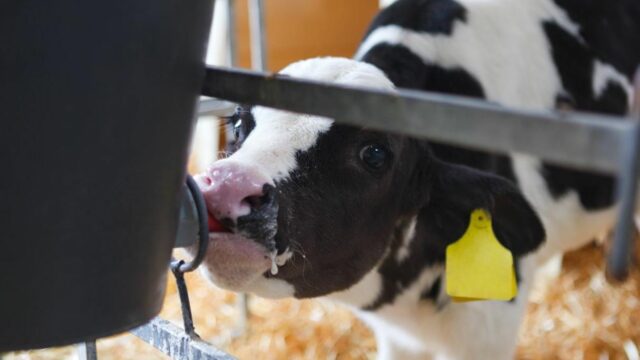 Feeding calves hay in conjunction with a high-quality milk replacer has proven to produce top-quality stock with higher weight gains.
Feeding calves hay in conjunction with a high-quality milk replacer has proven to produce top-quality stock with higher weight gains.
A recent trial conducted by Harper Adams University in conjunction with Bonanza Calf Nutrition involved 44 British Blue x Holstein bull calves, at a mean age of 22.6 days.
The diets of the calves within the trial were compared to those that have been fed straw as a major component of their feed intake.
The Trial Process
Divided into two groups, the young calves were offered good-quality meadow hay and Milky Way – a 100% milk protein calf milk replacer – or a good-quality winter barley straw and the same level of Milky Way.
The calf milk replacer was initially fed at a mix rate of 125g/L – fed at 2L twice per day – with the feed rate gradually reduced one week prior to weaning.
In order to stimulate rumen development, ad-lib 18% crude protein (CP) early weaning concentrates were made available to the calves in conjunction with a fresh water supply.
On day 42 of the trial, all calves were weaned and moved into group pens until 12 weeks, while continuing to be fed the same initial forage.
‘Impressive results’
The trial showed that hay had a significant (p>0.05) effect on daily liveweight gain (DLWG) until weaning. However, there were no significant differences in DLWG from weaning to 12 weeks (i.e. the straw-fed calves did not ‘catch up’).
The calves received a maximum of 500g of Milky Way a day – 19kg over the six-week feeding period. Those on hay recorded DLWGs of 0.70kg to weaning with the straw fed calves growing at 0.60kg.
Hay fed calves weighed an impressive 144.9kg after 12 weeks on trial.
Increased feed intake
Simon Marsh, principal lecturer and cattle specialist at Harper Adams University, who jointly supervised the study, noted that:
“Forage intakes were significantly higher with hay and with slightly higher concentrate intakes, resulting in an additional 70MJ of energy intake from start to weaning, resulting in the improvement in DLWG.
“It might have been predicted that, with the hay-fed calves eating more forage, it could have reduced their concentrate intake. However, this did not happen.”
With an increase in feed intake there is undoubtedly an increase in expenditure.
The total feed costs per calf were slightly higher with hay – £95.50/calf to 12 weeks compared to £93.84/calf for the straw-reared group.
However, the performance simply outweighs the cost, with feed costs per kilogram of gain lower due to the improved performance of the hay-fed calves.
“Overall performance of the calves was very good, meeting the recognised targets for rearing calves to 12 weeks,” said Marsh.
“This excellent performance is likely to be partially due to the standard of stockmanship and feeding a high-quality milk replacer,” he added.
Results of the study show that there was zero calf mortality over the 12-week period.
Providing the best-quality feed
To get the best performance out of your herd, you need to be providing them with the best-quality feed.
All hay used in this trial had a good ME value of 10.3MJ/kg DM; a crude protein of 10.3%; and high sugar content (5.8%), so it could be termed as ‘sweet meadow hay’.
Dr. Christine Cummins of Bonanza Calf Nutrition advises farmers to feed a well-formulated and palatable concentrate and monitor its performance regularly.
Milky Way is a concentrated, high-energy, 50% skim milk, low-lactose product, formulated to provide 30% more energy and milk protein than standard calf milk at the same feeding rate.
“This ensures calves eat more dry feed and forage, so dry matter intakes are therefore higher,’’ said Cummins.
“This is the only concentrated calf milk on the market and is made with six oils to maximise digestion and calf health,’’ she noted.
For More Information
For more information on the trial contact Dr. Christine Cummins at: 0808-1781017 or Click here
The post Trial records higher weight gains in hay-fed calves appeared first on Agriland.co.uk.
]]>The post Protecting your dairy calves from cryptosporidium appeared first on Agriland.co.uk.
]]>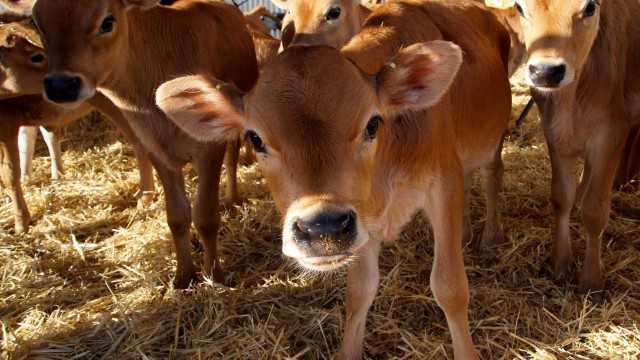 Focusing on diet in the two weeks following birth was vital for one dairy farming family whose calf rearing system was put to the test by cryptosporidium.
Focusing on diet in the two weeks following birth was vital for one dairy farming family whose calf rearing system was put to the test by cryptosporidium.
Cryptosporidium had been an ongoing problem at Trekillick Farms, which runs a herd of 300 pedigree Jerseys at Bodmin.
Trekillick Farms
In an attempt to control the spread of the microscopic parasite, Colin and Pauline Dyer, along with their son Mike, introduced Transformula to their feeding system.
The product has been formulated to replace transition milk which cows naturally produce after colostrum and which offers newborn calves vital protection and high-levels of nutrition in the early stages of life.
In order to insure that they were providing the best start for their young stock the Dyer family trialled Transformula against two other feeding systems.
Under their previous system, the Dyers fed calves:
- 4L of colostrum which scored 25% or higher within six hours of birth;
- Followed by 2L of colostrum and transition milk twice a day until day five;
- After which they received 400g of a high protein whey/vegetable-based powder twice a day until day 56.
Dr. Christine Cummins of Bonanza Calf Nutrition said she had concerns about feeding high-levels of crude protein to young dairy calves:
“This can predispose calves to scour as much of the crude protein if not digested in the young calf.”
In light of this advice the Dyers decided to make a change.
The trial
Each trial consisted of five August-born calves with an average birth weight of 23.5kg.
- Group 1 – was treated with anti-scour agents for seven days, received transition milk for the first four days and moved to a high protein powder from day five;
- Group 2 – received 600g/day of Transformula from day five to day 12;
- Group 3 – received 600g/day of Transformula from day five to day 19.
Although the trial was not a scientific one, calves were weighed weekly with those in group 3 achieving the highest daily liveweight gain (DLWG) at 0.57kg/day from 0-30 days, compared to 0.49kg for group 1 and 0.54kg for group 2.
DLWG from 30-56 days was highest in group 2, at 0.64kg/day, followed by group 3 at 0.62kg and group 1 at 0.58kg.
Pauline, who is in charge of the calf rearing on the Trekillick Farm, was more than willing to continue feeding Transformula.
“It’s a feed which the calves like and which makes my job much easier,’’ she said.
The bottom line
The “cost effective” nature of the product certainly adds to its appeal for the Dyer family. Feeding Transformula for seven days has a net cost of £4.50/calf or £9 for 14 days.
Calves on the Trekillick Farm are now fed 600g/day of a concentrated calf milk called Milky Way to allow calves to consume the same energy and milk protein as before but less lactose.
Although the Trekillick dairy calves are now consuming 200g/day less powder and less crude protein the Dyer family have not compromised on results.
“As coats and dung are considerably better with no apparent effect on performance,” said the Dyer family.
The post Protecting your dairy calves from cryptosporidium appeared first on Agriland.co.uk.
]]>The post Is your milk replacer maximising your calves’ potential? appeared first on Agriland.co.uk.
]]> Feeding calves hay in conjunction with a high-quality milk replacer has proven to produce top-quality stock with higher weight gains.
Feeding calves hay in conjunction with a high-quality milk replacer has proven to produce top-quality stock with higher weight gains.
A recent trial conducted by Harper Adams University in conjunction with Bonanza Calf Nutrition involved 44 British Blue x Holstein bull calves, at a mean age of 22.6 days.
The diets of the calves within the trial were compared to those that have been fed straw as a major component of their feed intake.
The trial process
Divided into two groups, the young calves were offered good-quality meadow hay and Milky Way – a 100% milk protein calf milk replacer – or a good-quality winter barley straw and the same level of Milky Way.
The calf milk replacer was initially fed at a mix rate of 125g/L – fed at 2L twice per day – with the feed rate gradually reduced one week prior to weaning.
In order to stimulate rumen development, ad-lib 18% crude protein (CP) early weaning concentrates were made available to the calves in conjunction with a fresh water supply.
On day 42 of the trial, all calves were weaned and moved into group pens until 12 weeks, while continuing to be fed the same initial forage.
‘Impressive results’
The trial showed that hay had a significant (p>0.05) effect on daily liveweight gain (DLWG) until weaning. However, there were no significant differences in DLWG from weaning to 12 weeks (i.e. the straw-fed calves did not ‘catch up’).
The calves received a maximum of 500g of Milky Way a day – 19kg over the six-week feeding period. Those on hay recorded DLWGs of 0.70kg to weaning with the straw fed calves growing at 0.60kg.
Hay fed calves weighed an impressive 144.9kg after 12 weeks on trial.
Increased feed intake
Simon Marsh, principal lecturer and cattle specialist at Harper Adams University, who jointly supervised the study, noted that: “Forage intakes were significantly higher with hay and with slightly higher concentrate intakes, resulting in an additional 70MJ of energy intake from start to weaning, resulting in the improvement in DLWG.
“It might have been predicted that, with the hay-fed calves eating more forage, it could have reduced their concentrate intake. However, this did not happen.”
With an increase in feed intake there is undoubtedly an increase in expenditure.
The total feed costs per calf were slightly higher with hay – £95.50/calf to 12 weeks compared to £93.84/calf for the straw-reared group.
However, the performance simply outweighs the cost, with feed costs per kilogram of gain lower due to the improved performance of the hay-fed calves.
“Overall performance of the calves was very good, meeting the recognised targets for rearing calves to 12 weeks,” said Marsh.
“This excellent performance is likely to be partially due to the standard of stockmanship and feeding a high-quality milk replacer,” he added.
Results of the study show that there was zero calf mortality over the 12-week period.
Providing the best
To get the best performance out of your herd, you need to be providing them with the best-quality feed.
All hay used in this trial had a good ME value of 10.3MJ/kg DM; a crude protein of 10.3%; and high sugar content (5.8%), so it could be termed as ‘sweet meadow hay’.
Dr. Christine Cummins of Bonanza Calf Nutrition advises farmers to feed a well-formulated and palatable concentrate and monitor its performance regularly.
Milky Way is a concentrated, high-energy, 50% skim milk, low-lactose product, formulated to provide 30% more energy and milk protein than standard calf milk at the same feeding rate.
“This ensures calves eat more dry feed and forage, so dry matter intakes are therefore higher,’’ said Dr. Cummins.
“This is the only concentrated calf milk on the market and is made with six oils to maximise digestion and calf health,’’ she noted.
For more Information
For more information on the trial contact Dr. Cummins at: 0808-1781017 or Click here .
The post Is your milk replacer maximising your calves’ potential? appeared first on Agriland.co.uk.
]]>The post Are you giving your calves the best possible start in life ? appeared first on Agriland.co.uk.
]]>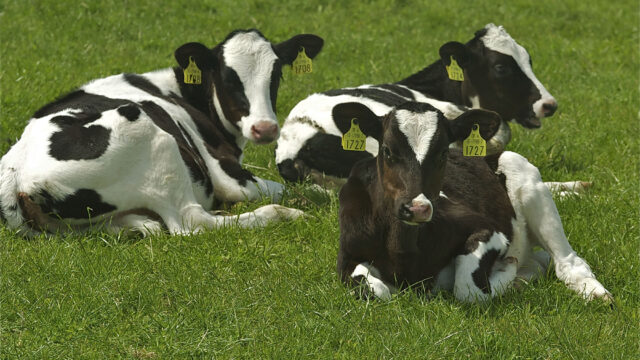 Transformula is aiming to transform calf rearing with its transition milk formula, designed with your herd’s health in mind.
Transformula is aiming to transform calf rearing with its transition milk formula, designed with your herd’s health in mind.
There has been an increasing realisation among farmers that young calves have different nutritional demands than older calves.
Cows naturally produce transition milk after colostrum, offering newborn calves vital protection and high levels of nutrition. Milk replacers must replicate this natural, nutrient-rich protein source.
With this in mind, the idea for Transformula – the only baby milk for baby calves – was born and has so far proved to be a popular choice for dairy farmers.
The search begins
Maurice and Zoe Davey of East Kimber Farm, Northlew, Devon, run a 115-cow pedigree herd of Holstein Friesians. The herd is averaging 10,000L sold per cow.
In an attempt to develop and increase the size of their dairy herd, the Daveys turned to sexed semen, which they used on 60% of their herd.
This resulted in a rise in the number of heifer calves born and placed increased pressure on the calving facilities and calf housing.
Starting a young calf off on a superb plain of nutrition was key to managing these high numbers and establishing a thriving replacement herd. With this in mind, the Daveys launched an investigation into calf milk replacers.
After trying several milk powder products, Zoe decided to investigate the pros and cons of a number of well-known suppliers, including Shine Milk Powder and Bonanza Calf Nutrition.
The initial investigation began with Andy Berry of Launceston-based Berry’s Agriculture and evolved around an examination of various protein sources in milk powder.
“Both skim milk and whey proteins are much more digestible than vegetable proteins for young calves,” according to Bonanza’s Stuart Fry.
“You must also take into account the high genetic merit of the calves before narrowing down your ideal type of feeding programme,” he urged.
Transformula, a skim and whey milk replacer, made using milk protein with added immunostimulants and probiotics, was the recommended choice.
“It ticked all the boxes,” Zoe said.
The proof
In an attempt to provide the best for their young calves, the Daveys decided to give Transformula powder a trial. The new and improved feeding regimen is outlined below:
- Within one-to-three hours post-birth, each calf receives 4L of refractometer-tested colostrum;
- This is followed 24 hours later by 375g of Transformula, administered twice a day at a rate of 150g/L;
- At approximately 10 days old, calves move over to Shine Twice A Day, which is a skim-based product and the feed rate is increased to 900g/calf/day.
Six months later, the pedigree farmers are more than pleased with the results and have seen “a significant drop in calf mortality”.
“A combination of Andy Berry’s enthusiasm and passion for rearing calves and some sound advice from Bonanza Calf Nutrition persuaded us to try it; results have persuaded us to stay with it,” Zoe said.
While results have not been perfect, there have been vast improvements in calf health.
“We still get scours, mainly caused by cryptosporidium; but we now have far less incidences of scour-related mortality,” she noted.
Strong management practices hold the key to a successful business and calf rearing is no exception.
Stuart added: “Although it is important to get the correct dosage of Transformula into your calf to maximise the effect of the health-promoting formulation, other factors will influence results.
“Attention to detail, hygiene practices and good management are equally important to get the calves off to a good start,” he said.
More information
To find your local stockist, contact Bonanza at: 0808-1781017 or Click here
The post Are you giving your calves the best possible start in life ? appeared first on Agriland.co.uk.
]]>The post Latest DeLaval voluntary milking system shines on European farms appeared first on Agriland.co.uk.
]]>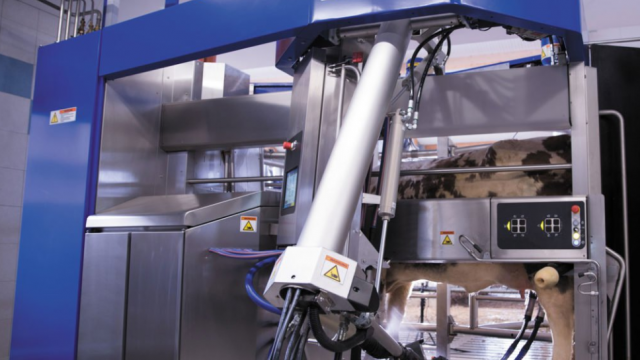 Earlier this year, DeLaval – the Swedish milking equipment and technology company – unveiled its latest voluntary milking system (VMS).
Earlier this year, DeLaval – the Swedish milking equipment and technology company – unveiled its latest voluntary milking system (VMS).
Described as a new experience for cows and customers, the DeLaval VMS V300 helps farmers by making them less reliant on future labour market uncertainties, while also keeping them at the forefront of animal welfare, food safety and farm profitability.
The benefits:
- 99% teat spray hit rate;
- ICAR approved real quarter milking;
- Up to 10% higher capacity;
- Reduced running cost from the previous model;
- Up to 99.8% attachment rate;
- Up to 50% faster attachment time.
The VMS V300 system, which is now available worldwide, has already been installed on numerous farms throughout Europe. Farmers share their experiences of the technology below.
2.6 milkings per cow in Denmark
Farming in Logstor, Denmark, Soren Hojgaard Anderson milks 155 cows under an organic system on 260ha. Soren has been milking with VMS for 10 years. He operates three VMS milking robots – a 2008 model, a 2013 model and a new VMS V300.
When he put the new VMS V300 milking system to work, he found that with its 99.8% attachment rate, the new system is about one minute faster per cow; this allows him to increase productivity.
You can see it on the cows. You can see it on the legs, under the hooves, that this system is better. You can have a normal family life and you can have normal working hours.
“Your employees can have normal working hours as well. It will be easy to be a farmer in the future,” Soren said.
Soren has noticed a number of benefits from the VMS system, including: reliability; smooth attachment; and no teaching of cow’s teat coordinates required. With the reduced milking time and higher attachment rate, Soren can also achieve 35 more milkings each day.
Health and cost benefits also immediately
In France, brothers Loic and Florent Perrin milk 145 cows on 400ha. Their herd produces 1.4 million litres of milk annually.
When Florent began milking with the new DeLaval VMS V300 milking system, with its 99% hit rate, the precision of the teat-spraying provided by DeLaval InSight started delivering health and cost benefits almost immediately.
When it comes to the benefits witnessed, the brothers cite an ability to attach to different udder shapes; peace of mind; very accurate teat spraying; and the accurate diagnostic tool (OCC) as the key benefits.
Lowest bacterial count and highest milk quality
In Numberg, Germany, Alfred Piling milks 210 cows on a land base of 150ha. Annual milk production stands at 1.8 million litres, achieved over 2.6 milkings per day.
When Alfred put the new DeLaval VMS V300 milking system to work on his farm, the DeLaval PureFlow preparation system and Real Quarter Milking with four ICAR approved milk meters, resulted in the lowest bacterial count he has ever seen and the highest quality milk.
With the new system, Alfred has observed a 43 second reduction in milking time per cow.
10% more capacity to grow the herd
Johan and Willem Van de Tweel – a father-and-son team – milk 156 cows on 90ha. When the DeLaval VMS V300 was installed, Willem had growth in mind.
Not only does the increase in efficiency give him 10% more capacity to grow his herd, he can add more VMS V300 units over time, easily and cost-effectively.
The VMS just fits well because you’re creating a bit of flexibility in your working rhythm.
“The cow is optimally given the space to go and stand where she wants. If she wants to milk, then she can go milk. Does she want to eat first? Then she goes to the feeding area,” Willem said.
Click here for more information on the DeLaval VMS V300
The post Latest DeLaval voluntary milking system shines on European farms appeared first on Agriland.co.uk.
]]>The post Do you want to spearhead AgriLand’s team in the UK? appeared first on Agriland.co.uk.
]]> AgriLand – the fastest-growing digital agricultural news publisher in Europe – is searching for leaders to spearhead its arrival in the UK.
AgriLand – the fastest-growing digital agricultural news publisher in Europe – is searching for leaders to spearhead its arrival in the UK.
Following the recent launch of Agriland.co.uk, the media group is now looking to appoint a News Editor, a News Journalist and a Technical Journalist.
Together, this team will head up a pioneering agricultural news and technical information portal that will cover all things farming right across England, Scotland, Wales and Northern Ireland.
News Editor
First up, AgriLand.co.uk is seeking to appoint a News Editor to lead the editorial team.
The objective is to ensure that the portal is the fastest, most accurate and most reliable information source for UK farmers and the wider UK agri industry.
Reporting to the Managing Director, the News Editor will make a significant contribution to directing and defining AgriLand.co.uk’s online presence.
This senior-level appointee will also recruit, lead and develop a team of digital journalists and contributors, as well as generating hard-edged content.
Prior experience is essential. Journalistic/editorial skills and experience of web publishing are crucial.
The successful candidate will most likely have a formal journalistic qualification, along with a demonstrable track record in UK media – whether at regional or national level.
The chosen candidate will be expected to have a nuanced understanding of social media and SEO tools. Additionally, experience of mentoring and development would also prove useful in this role.
A passion for farming and agriculture would naturally be of benefit too.
If you are highly motivated, enthusiastic and experienced and want to play a lead role in generating timely and breaking news stories, then AgriLand.co.uk can provide the opportunity.
Please send an up-to-date CV and a cover letter (circa 250 words), explaining why you’re the right candidate, to: [email protected].
News Journalist
AgriLand.co.uk is also seeking to appoint a News Journalist who will play an integral role in generating news stories as part of an innovative digital domain.
The successful candidate will most likely have a formal journalistic qualification, along with a demonstrable track record in UK media – whether at regional or national level.
Extensive experience of agricultural matters is not immediately essential; training will be provided in this area. However, some awareness of rural or farming affairs is preferred.
A proven journalistic instinct and ability, whether in print or digital media, is the priority.
Reporting to the UK Editor, the chosen candidate will be expected to generate relevant and timely stories in a fast-paced environment.
You must be able to produce factual, clean content to tight deadlines.
If you want to be part of a vibrant news desk with a national remit, send a CV and a cover letter (circa 250 words), explaining why you’re the right candidate, to [email protected].
Technical Journalist
AgriLand.co.uk is looking for an energetic and enthusiastic agricultural graduate, who wants to play a vital part in producing technical farming stories and in-depth features as a Technical Journalist.
Reporting to the News Editor, the chosen candidate will be expected to work with a technical team on relevant stories and content.
Responsibilities will include: writing and proofreading; generating factual, clean copy to tight deadlines; and pitching and producing original content ideas.
The appointee will also be involved in the production of a range of content for the website and social media channels.
The ideal candidate will have a knowledge of and passion for farming and agriculture and must also hold a graduate qualification in agricultural science or a related degree.
Although online writing experience would be an advantage in this position, it is not essential.
However, it is imperative that the appointee is driven, hard-working, flexible, holds a driver’s license and has a personal means of transportation.
If you want to be part of an exciting and rapidly-growing company, send a CV and a cover letter (circa 250 words), explaining why you are a suitable candidate, to [email protected].
The post Do you want to spearhead AgriLand’s team in the UK? appeared first on Agriland.co.uk.
]]>The post The AgriLand UK App is now available appeared first on Agriland.co.uk.
]]>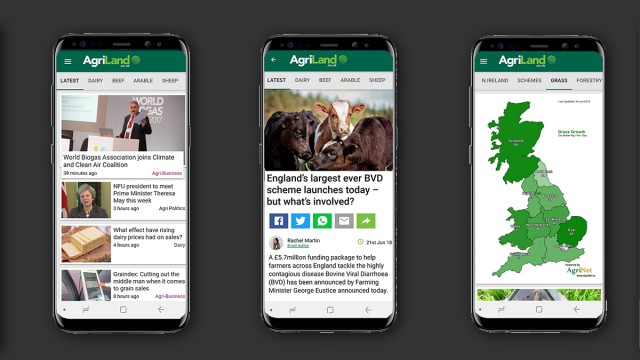 We have made it even easier to keep up-to-date with all that’s happening in UK agriculture and farming with our new AgriLand app.
We have made it even easier to keep up-to-date with all that’s happening in UK agriculture and farming with our new AgriLand app.
The AgriLand app makes it easier for you to stay abreast of all the latest news from across the UK and around the world.
Now, you can have up-to-the-minute news, information and features.
The AgriLand.co.uk app allows you to access the most recent news stories as they happen, on your smart-phone or tablet – on both IOS and Android.
Stories (articles) are arranged in key categories. This will allow our growing readership to engage with what’s of most immediate interest, regardless of your farming enterprise.
“The last few years have seen a huge swing from traditional print to digital media,” explained AgriLand managing director Cormac Farrelly.
“Everyone now wants up-to-the-minute news and information at their fingertips. The news cycle has become shorter. To read about something that happened a week ago, in a rapidly-evolving industry, is too late.
“Farmers are business people. They need the latest information at their fingertips to make sound farming business decisions. The rise of the smart-phone in recent years goes hand-in-hand with this.”
AgriLand.ie is already the largest and fastest growing agricultural portal in Ireland. Get access to what promises to be a vital source of information for anyone involved in UK agriculture.
And, of course, downloading the app is free and simple, just choose the relevant link below!
The post The AgriLand UK App is now available appeared first on Agriland.co.uk.
]]>The post Welcome to AgriLand.co.uk appeared first on Agriland.co.uk.
]]>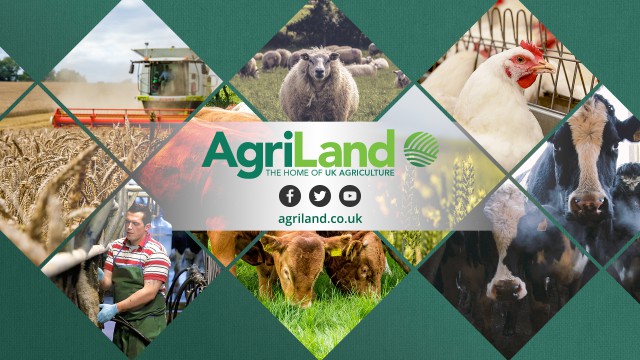 AgriLand is the fastest-growing digital agricultural news publisher in Europe.
AgriLand is the fastest-growing digital agricultural news publisher in Europe.
Using the latest technology – on mobile and desktop devices and via our free app – we deliver current and breaking farming news, views and technical information to farmers and the wider agricultural business community.
As a digital-only news publisher, we bring a new ethos and focus to a sector that is evolving rapidly.
Our team of highly-skilled news and technical journalists is committed to bringing you the information that matters – as it happens.
Our content is convenient and readily accessible; you don’t need an expensive subscription or a cumbersome log-in. We don’t charge for it.
Proven track record
Established in Ireland in 2013, AgriLand pioneered the daily delivery of agricultural and farming news content in a digital-only format there.
Since then, AgriLand has grown to become the trusted source for Irish farmers to keep up-to-date with what’s happening – both locally and globally.
With close to 500,000 unique users a month, we understand what our readers want. We provide the information they require to make timely business decisions, to keep them at the forefront of food and commodity production trends.
Now – with AgriLand.co.uk – we’re about to do the same in the UK – across England, Scotland, Wales and Northern Ireland.
We publish news as it happens – seven days a week; 365 days a year.
Like you, we are passionate about farming and the broader agri-business sector. We understand the day-to-day issues that face the sector.
Our mission statement is to innovate rather than imitate. That means we are constantly pushing the boundaries – to improve our products and services to benefit you and the wider industry.
The post Welcome to AgriLand.co.uk appeared first on Agriland.co.uk.
]]>
